
AGRIBUSINESS
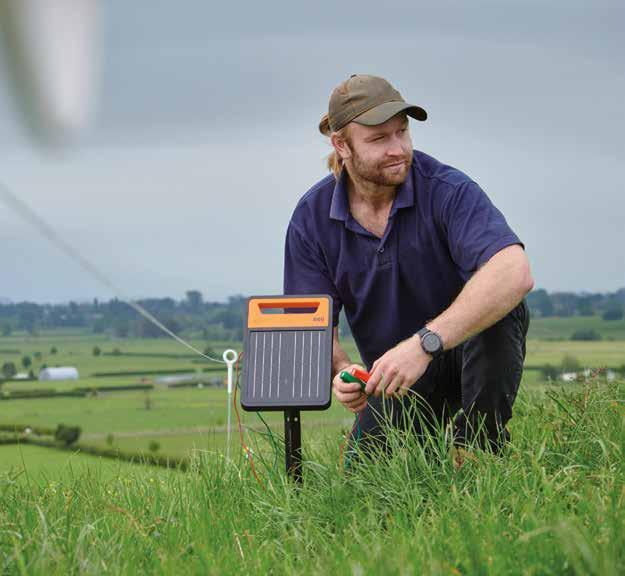
ANZCO Foods CE finds real value in Company Directors’ Course
CALVING
Make sure farmers get the whole story on colostrum replacers
PRODUCT UPDATE
Making every blade of grass count on challenging country
ANIMAL ADVISOR
Keep it coming – how early grass powers flock productivity
INDUSTRY NEWS New product quagmire laid bare am.gallagher.com 0800 731 500 LITHIUM BATTERY NEW Faster charging, longer lasting. Intelligent, adaptive energy control. Reliable power, 24/7. The power to graze anywhere. LITHIUM SOLAR ENERGIZERS
Watching over your pastures so you don’t have to.
Delivering a complete suite of pasture protection and brushweed control products for New Zealand farmers.
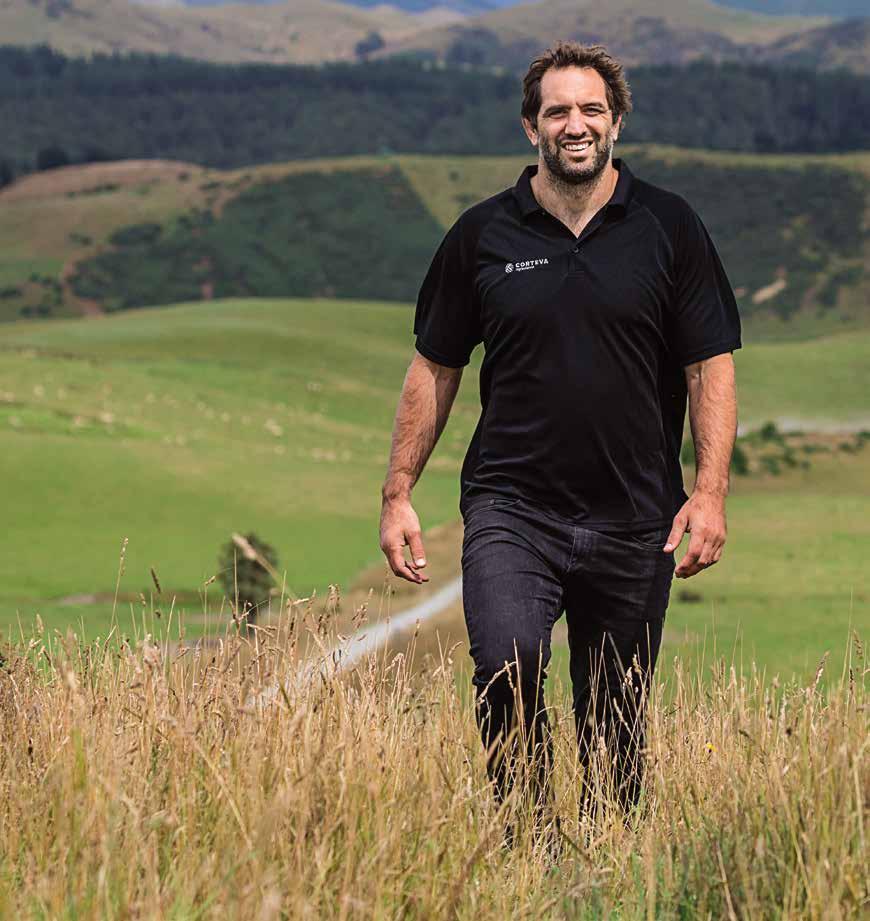
Samuel Whitelock – Plant Science Graduate, Lincoln University.
Our portfolio of powerful, proven products has helped farmers from one end of the country to the other create and maintain thriving businesses, and has earned us an excellent reputation as pasture protection and brushweed specialists.
Our extensive suite of herbicides provides farmers everything they need to win the war against weeds and brushweeds. Visit corteva.co.nz to view our online pasture and brushweed resources.
Visit us at corteva.co.nz ®, ™ Trademarks of Corteva Agriscience and their affiliated companies. COR-CTA0053
GRANULAR HERBICIDE Tordon 2G GOLD HERBICIDE BRUSHKILLER XT Tordon™ HERBICIDE PASTUREBOSS™ Tordon™ HERBICIDE Grazon™ HERBICIDE POWERFLO™ Versatill™ HERBICIDE Vigilant™ II HERBICIDE Preside™
AgriMedia Ltd, Ashcroft House Tancreds Road, R D 2. PO Box 37151, Halswell, Christchurch 8245 ph 03 329 6555 fax 03 329 6550 www.agrimedia.co.nz www.novachem.co.nz
Publishers of Rural Contractor & Large Scale Farmer, AgriBusiness, AgriVet, NZ Cropping Yearbook, Australian AG Contractor & Large Scale Farmer, NZ Novachem Agrichemical Manual.
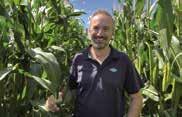
CALVING FEATURE
© NZ AGRIBUSINESS - No part of this publication may be reproduced in any form without the prior written permission of the publisher. Opinions expressed in this publication are not necessarily that of the publisher and suggest independent advice be sought before acting on information or suggestions contained herein.
CONTRIBUTIONS
Editorial and photographic contributions are welcomed and should be sent directly to the editor, Kathy Davis. Editing of submissions is at the sole discretion of the editor and will accept no responsibility for unsolicited material.
EDITOR
Kathy Davis
PO Box 37-151, Christchurch ph 03 577 5640 fax 03 577 5647
ADVERTISING MANAGER
Paula Forde mob 027 229 0362 email paula@agrimedia.co.nz
CIRCULATION
ddi 03 329 6555 email admin@agrimedia.co.nz
PRODUCTION & DESIGN
Amanda Vroombout mob 0277 788 274 email production@agrimedia.co.nz
Printed by Blueprint Ltd
Four decades on, still going strong
Herbicide resistant weeds widespread,
6 It has been suspected for some time and now the numbers prove it; herbicide resistant weeds are widespread on arable farms.
11
Take your mind back to 1984. Politically, it was quite the time – Prime Minister Rob Muldoon threw a snap election, a record number of New Zealanders turned out to vote, and the David Lange-led Labour Government ushered in a wave of economic upheaval.
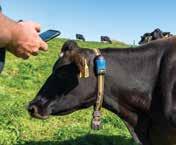
ANIMAL ADVISOR
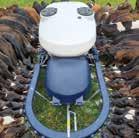
PRODUCT UPDATE
Trial diverts thousands of dead collars from e-waste steam
MSD Animal Health New Zealand has partnered with Agrecovery in NZ’s first pilot to recycle SenseHub Dairy Collars (previously known as Allflex Collars) used by its dairy farmer clients.
Money in the bank – the value of consistency ����24 There’s a reason some lamb producers in New Zealand earned $27.50 more per head than their peers last season, and are likely to pocket a similar premium for lambs sold in 2023/24.


AGRIBUSINESS
Novel packaging plants a flag for sustainability
A new company has been established to market a sustainable plant-based alternative to polystyrene, developed through a government-funded Crown Research Institute collaboration.
AgriBusiness May/June 2024 1 PUBLISHED BY:
CONTENTS ISSUE 164 MAY/JUNE 2024 REGULARS Editorial.................................................................................................................................... 2 Industry News 3 Calving Feature.......................................................................................................................10 Product Update 15 Animal Advisor 24 Agribusiness 28 People .................................................................................................................................... 32 INDUSTRY NEWS
surveys
�����������������������������������������������
show
����������������������������
�������������������������������������������������15
������������������������������������������
30
Hello everyone!
WELCOME BACK TO THIS LATEST ISSUE. IF YOUR FARMERS AND GROWERS HAVE BEEN HANGING OUT FOR RAIN, HOPEFULLY THEY’VE HAD SOME BY NOW (BUT NOT TOO MUCH).
Marlborough is synonymous with dry, but even so, I was startled to learn recently that our rainfall between June 2023 and March 2024 was the lowest recorded in 94 years. You might notice a bit of a preoccupation with data and numbers in the magazine this time, mostly in our coverage of the Environmental Protection Authority and its performance in assessing and re-assessing the compounds so vital to our primary sector.
It’s not snappy reading.
But it is super important, because unless things change significantly and fast, we will end up miles behind the rest of the world, stuck with outdated chemistry and technologies while everyone else moves on.
Some say this process has already started, so the more we can do to raise awareness of the severity of the challenge, the better.
Speaking of moving on, every now and then we have a story which changes virtually as we go to print.
In this case, it’s our piece on the hydrogen cyanimide reassessment for kiwifruit on page 21.
The latest news is that the hearing has now been formally closed, which is good, because it means a decision has to be released no later than 27 May.
For those of you whose farmers will soon be welcoming a new generation of future milking stars, we have our annual special feature on calving equipment and nutrition in this issue, including new feeder options, and the right tucker to get those babies off to a flying start.
For the latest tactics on managing parasite resistance in sheep, head to our animal advisor section, and while you’re there, check out
WHY LAUNCHPAD18?
Natural, whole, full cream colostrum gold, dried & packaged as it comes from the animal
18% IgG = 20% more IgGˆ than the next best option
Convenient. One feed per animal = immunity delivered
Can be used to fortify maternal colostrum
Easy to mix
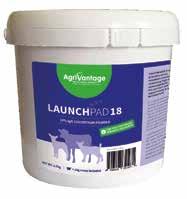

the mouthwatering story on lamb unlike any other.
A Northland family shares their inspiring story about safety and health in ag contracting in our people section, and there’s also a great case study from a meat industry leader about the value of pursuing further knowledge and understanding of business governance.
For AgriVet, I was lucky enough to spend a day with the very busy team at Napier’s newest clinic, and to learn how a long-established practice born from the sheep industry is future-proofing itself for the good of its farmers as well as other customers.
Enjoy! We’ll be back in July.

One feed is all it takes
A newborn calf* needs 100g IgG in the first hours of life
2L (one feed) Launchpad18 delivers 108g IgG per calf. It is best practice to feed calves another 2L maternal colostrum within the first 12 hours.
A newborn lamb* needs 10g IgG in the first hours of life
200mL (one feed) delivers 10.8g IgG per lamb
* Assuming birth weight of lamb is approx. 4kg and calf is 40kg.
2 AgriBusiness May/June 2024 INDUSTRY NEWS
NATURAL WHOLE COLOSTRUM 0800 64 55 76 www.agrivantage.co.nz ˆ IgG testing done
May 2020.
New product quagmire laid bare
TWO TO FOUR YEARS.
That’s how long it would take the Environmental Protection Authority to simply clear its current backlog of applications if it dropped all current hazardous substances assessments, and stopped accepting any new applications.
An independent report on the authority’s performance written November 2023 paints a grim picture for anyone in New Zealand whose livelihood would be improved by new and novel crop protection and animal health products.
Prepared as a brief for the thenincoming Government, ‘The EPA’s role and performance in assessing hazardous substances’ by Sapere publicly quantifies what many have been saying privately for years – getting new products into our market has become a costly quagmire of red tape and delays.
If you were trying to bring a new active or actives into NZ between 2021 and 2023, it would have taken an average of 1048 days, or close to three years, to get an assessment and decision from the EPA.
Ten years ago, if you undertook the same exercise between 2013 and 2015, it would have taken less than half that time, at an
average of 405 days, and the agency was processing nearly twice as many applications of this type, the report says.
(And remember, EPA approval is only part of the process – ACVM registration must still be sought before the product can be sold in NZ.)
Not only has the total number of assessment decisions made by the EPA each year trended down over the past decade, it is processing far fewer complex products - 14 per cent of all decisions for 2023 at the time the report was written, vs 47 per cent in 2013.
And this is not for lack of demand – application numbers remain ‘relatively constant’ for most types of product over the same time frame, the report says.
Why does this matter?
Because the complex decisions are the ones you and your clients need.
Not just existing actives already approved in another substance with a similar use pattern, but existing actives in different use patterns, or different combinations; and the big one – active ingredients new to NZ.
These are known as Category C applications, and as of October
Backlog is bad news for those seeking to bring new chemistry to NZ

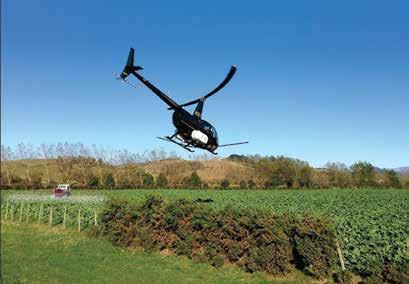
2023, 23 of these were awaiting a decision, with seven under assessment.
None of these seven was likely to be decided in 2023, Sapere noted.
“While we only looked at data from 2013-2023 it is notable that none of the Category C applications decided in 2013 were lodged in 2013 – meaning that the queue of Category C applications has likely existed (and has been growing) for more than a decade,” the authors say.
“Given the relatively low throughput, industry in NZ will be waiting considerably longer than their counterparts overseas to access new chemicals that could spur productive and technological breakthroughs.”
Likewise, the backlog is bad news for those seeking to bring new chemistry to NZ.
“Applicants may have invested large amounts into research and development of the hazardous substances and time delays (assuming the substance will eventually be approved) will push out their opportunities to recoup those costs.
“These costs will be passed onto end-users and may, over time, influence market-entry decisions for multinational manufacturers.”
Without further action to address the queue of unprocessed applications the authority risks reputational damage, and loss of confidence in its effectiveness, the report says.
Meantime, of the 27 full time employees actively involved in assessing hazardous substanc-
Higher fees are not the panacea, but could help ease some pressure long-term�
es at the time of writing, close to half (13) are focussed on reassessing existing chemicals we already use in NZ, a list that numbered 43 as of October 2023.
The authority completes an average of two of these reassessments every year, a rate that ‘materially lags’ those of comparable regulators in Australia, Canada and the United States.
Sapere also reports the EPA is relying on out-dated ecotoxicity modelling tools which urgently need updating to assess hazardous substance applications.
Agrichemicals dominate the authority’s use of such tools.
“The current models are no longer fit for purpose. Several … have been superseded in their original jurisdictions. As best international practice is not being followed and applied, staff have difficulty analysing if human health, environmental, and Māori values are being adequately protected.”
This leads to the EPA having to take a conservative approach in considering risks, determining controls for use or declining an approval, which in turn potentially prevents use of new chemicals or innovations that could benefit primary sector productivity and environmental outcomes.
“From an organisational perspective, the EPA’s ability to continue to use obsolete models may be compromised at any time due to operating system
AgriBusiness May/June 2024 3 INDUSTRY NEWS
UK consumers want natural pet nutrition
BEEF + LAMB NEW ZEALAND’S LATEST TRACKING OF UNITED KINGDOM CONSUMER
TRENDS SHOWS A GROWING DEMAND FOR SUSTAINABLE, NATURALLY PRODUCED PET FOOD WITH ASSOCIATED HEALTH BENEFITS
And Kiwi farmers could cash in, says Hugh Good, B+LNZ global market intelligence and research manager.
“Given the high sustainability attributes of NZ sheep and beef products, NZ is well placed to take advantage of a global shift to better quality, more sustainably produced pet food ingredients.
“What will help us take advantage is ensuring NZ’s rigorous production standards are communicated to our international consumers. Programmes like the NZ Farm Assurance Programme (NZFAP) and NZFAP Plus will be key to do so.”
The UK is as a substantial mar-
ket for pet food exports, second only to the United States, with nearly 57 per cent of UK households owning a pet.
In 2022, UK consumers spent nearly £10 billion pounds on pet food and pet-related products.
Research by ingredients company BENO, a prominent ingredients company, revealed a growing preference among pet owners for 'natural' pet food with added health advantages, mirroring human nutrition trends. There is increasing demand for clean label products such as no or low-allergenic, ‘natural’ pet food ingredients, and there is rising interest in attributes like prebiotics.
upgrades and/or changes to system compatibility.”
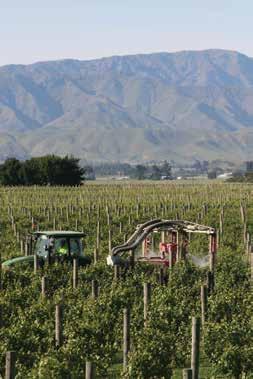
Agrichemicals dominate the EPA’s use of ecotoxicity modelling tools�

The research also underscored the rising interest in sustainable pet food.
Research by Mars petfood found that 57 per cent of pet owners were willing to switch their petfood to a more sustainable product.
NZ pet food exports have quadrupled in less than a decade, increasing from $75 million a year in 2014 to $320 million in 2023, according to the national Pet Food Association.
“Retail-ready petfood exports have been growing very strongly
What exactly is the problem here?
Sapere says underfunding has caused the authority to fall behind on its work.
“The EPA’s cost per application is efficient compared to other similar regulators and, once it begins actively working on an application, it completes that assessment work within a timeframe that is comparable to overseas regulators.
“However, (it) is not funded to process the volume of applications it receives in a timely manner.”
Even after adjustments for scale, NZ invests considerably less in its hazardous substances regime than Australia, Canada, the United States, the United Kingdom and Europe.
“While Budget 2023 provided an additional $1.1m in new funding for 2023/24, this remains well short of what is needed for an effective assessment regime.” Not all of this extra money is available to assessments and reassessments. It also includes funding for compliance, monitoring and enforcement, support and advice through Kaupapa Kura Taiao, the EPA’s Māori policy and operations group, and general overheads. The report says on average 16 per cent
Only the best will do for pampered British pets�
for some time. Growth is at 17.4 per cent into North America and 25.3 per cent into Asia.”
In March, Riverland Foods opened a $30 million, state of the art factory in Christchurch expected to be NZ’s largest export pet food cannery.
With capacity of 30 million cans of high-value cat and dog food a year, almost all output will be exported, for a projected annual value of over $120 million.
of assessment costs are recovered from applicants, but this is artificially and extremely low, and should be increased.
Industry observers point out however that direct comparison with Australia in this regard is not a case of apples with apples, because applicants there only have to pay one regulator to get new products into the market - the APVMA - vs two here, the EPA and the ACVM.
“Fee increases are not the panacea but could help ease some pressure in the longerterm,” the Sapere report says.
One reason full cost recovery has not been sought by the EPA to date is that the private benefits of an approval do not necessarily accrue solely to the applicant.
EPA approvals are specific to a substance with a particular active ingredient(s) and hazard classifications, not to the applicant.
“As such, while the applicant will bear costs from going through an EPA assessment process, the subsequent approval may benefit businesses who are subsequently able to import or manufacture a ‘matching’ or ‘equivalent’ substance (if there are not proprietary rights involved).”
The full report can be most easily found on Sapere’s website (srgexpert.com) under ‘resources’.
4 AgriBusiness May/June 2024 INDUSTRY NEWS

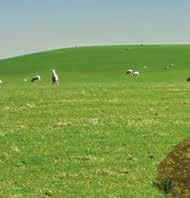


What are winter weeds costing you?
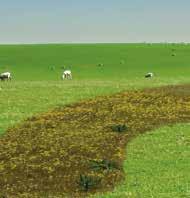
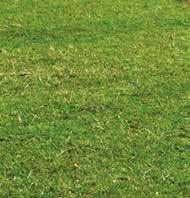
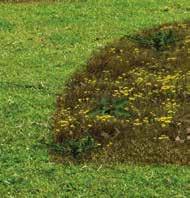
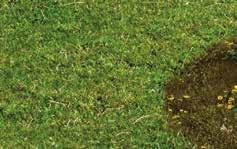




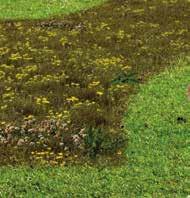
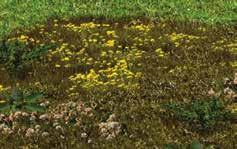



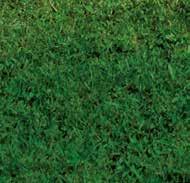
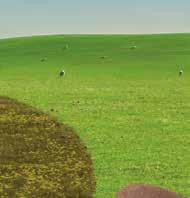
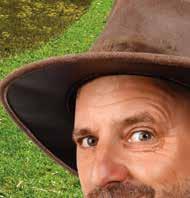
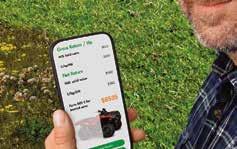







Produce more pasture with Nufarm’s phenoxies range to control winter weeds. For calculators and resources to maximise returns, check our new APP at Grassmanship.nz.
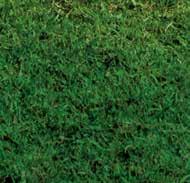






AgriBusiness May/June 2024 ONF208522NF
®Agritone
Baton are registered trademarks of Nufarm Australia Ltd. Sprinter 700DS and Relay Super S are registered trademarks of Nufarm Ltd.
and
SCAN ME
Herbicide resistant weeds widespread, surveys show
IT HAS BEEN SUSPECTED FOR SOME TIME AND NOW THE NUMBERS PROVE IT; HERBICIDE RESISTANT WEEDS ARE WIDESPREAD ON ARABLE FARMS.
The confirmation comes after five years of herbicide resistant weed surveys on arable farms, each year in a different region.
The Foundation for Arable Research has just published an Arable Extra summarising the results.
FAR senior field officer Ben Harvey says the surveys show that resistance to commonly used herbicides is widespread, with very high levels in some regions.
The most common resistant weed is ryegrass (Lolium species).
Regions often have their own difficult-to-control weeds.
In all regions, the only resistance detected was to Mode of Action Groups 1 and 2.
Group 1 herbicides are used to control grass weeds in a range of broadleaf and cereal crops.
Group 2 herbicides have activity on a wide range of grass and broadleaf weeds and are also
used post-emergence on the weeds.
Worldwide, resistance to Group 2 herbicides is the most widespread form of herbicide resistance.
No resistance to glyphosate (Group 9), the world’s most popular herbicide, was recorded on arable farms, although it has been detected outside of the random surveys.
South Canterbury recorded the highest levels of herbicide resistance, with 71 per cent of farms surveyed recording at least one instance of a herbicide resistant weed.
In comparison, in the eastern North Island, herbicide resistant weeds were only found on 11 per cent of farms.
Of Mid Canterbury farms surveyed, 60 per cent recorded herbicide resistance, in the Selwyn District 54 per cent and Southland 59 per cent.

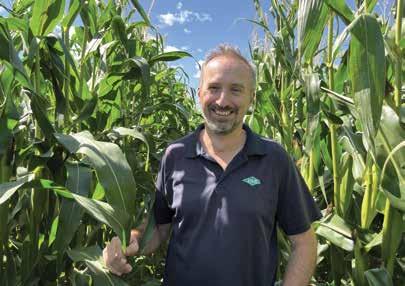
FAR senior field officer Ben Harvey says the surveys show that resistance to commonly used herbicides is widespread�
farming systems, as areas where crop rotation options are limited tend to have higher levels of resistance, Ben Harvey says.
Other factors include whether or not pasture is commonly included in rotations; the prevalence of grass seed crops, particularly ryegrass, in the rotation; and whether or not spring crops, which can disrupt weed life cycles, are commonly included in rotations.
Ryegrass, both annual and perennial, is the main offender, with resistance to Group 1 and 2 herbicides.
“Resistance seems to be everywhere, but especially in South Canterbury.”
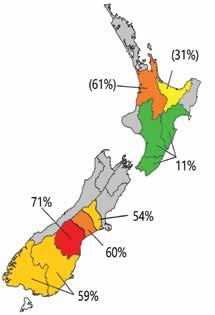
Map showing the percentage of farms where at least one herbicide-resistant weed was found during random surveys between 2019 and 2023� Numbers in brackets indicate data from a separate
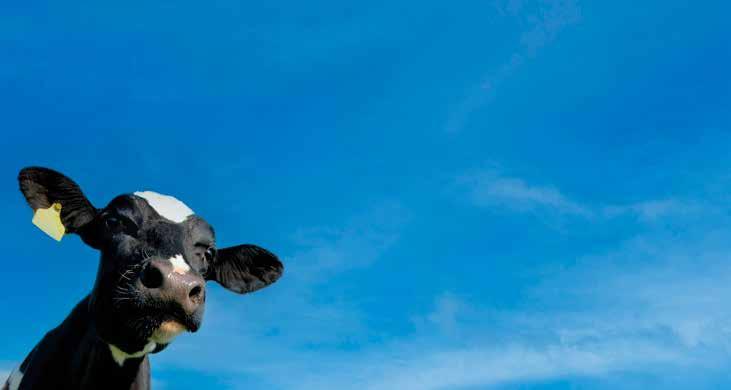
A proudly 100% New Zealand owned and operated family business based in Oamaru, North Otago Having over 30 years' experience in producing high quality, top performing milk replacers, Milligans Feeds is one of New Zealand's leading suppliers of animal nutrition products
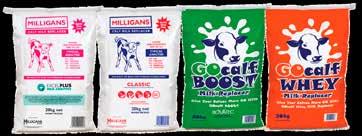
6 AgriBusiness May/June 2024 INDUSTRY NEWS
0800 786 253 0800 786 253 || feedsales@milligans co nz feedsales@milligans.co.nz || www milligansfeeds co nz www.milligansfeeds.co.nz GIVE YOUR CALVES THE BEST HEAD START GIVE YOUR CALVES THE BEST HEAD START
Rural commitment more than skin deep
SOUTHLANDERS FROM ALL OVER THE REGION WERE LINING UP TO TAKE THEIR CLOTHES OFF AT THE SOUTHERN FIELDAYS AT WAIMUMU THIS YEAR, AND FOR NEARLY HALF OF THEM, IT WAS POTENTIALLY A LIFE-SAVING EXPERIENCE.
That’s because they were then referred to their doctors for concerning lesions on their skin, thanks to Corteva Agriscience sponsoring an on-site skin cancer screening clinic at the field days for the second year in a row.
Every 20 minute appointment with Chelsea Langman and Phillipa Dobson-Brown from Skin Aware was booked out, and of the 43 people checked, 75 per cent had never been screened for skin cancer, Langman says.
“We referred 20 for follow up, including seven potential early melanomas; eight clinical basal cell carcinomas and two potential squamous cell carcinomas, and there was plenty of sun damaged skin.”
Several patients will require further surgery, she says.
It was a welcome return to regional New Zealand for New Plymouth-based Langman, a clinical nurse who founded Skin Aware to

specialise in workplace skin checks for corporate clients like Corteva.
She came south with the company for the inaugural on-site clinic at last year’s South Island Agricultural Field Days, and was again thrilled by the response this time.
Phillipa Dobson-Brown has joined Skin Aware to extend the team’s skin cancer screening reach to Southland, in addition to Sara Briant who is based in Gisborne and Julianne Watson joining the New Plymouth team.
Acutely aware of the challenges faced by many in rural communities, both in terms of accessing health care in the first place, and finding specific service providers to check their skin, Langman is very keen to do more regional event work targeting a group of people whose risk of skin cancer is inherently high.
“Corteva’s role in making the field days clinic happen needs to be highlighted. It was their idea, and in making it possible, they’re helping look after the health of rural NZ.”
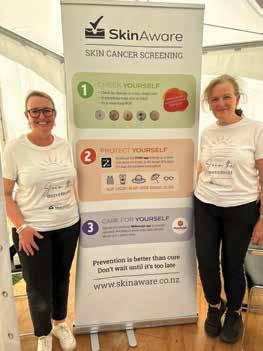
NZ agriculture workers have among the world’s highest risk for melanoma due to our exceptionally high UV levels.
NZ’s peak summer UV levels are roughly 40 per cent higher than those at comparable latitudes in the Northern Hemisphere.
Outdoor workers receive up to 10 times more UV exposure than indoor workers, and farmers work an average of 5-8 hours a day outside, Langman says.
Lisa Scott, marketing communications specialist for Corteva, says in Southland – more so than Canterbury, where the first event was held – many communities don’t have ready access to a dedicated skin clinic.
“Quite a few of those who made an appointment at Waimumu had family members who had been affected by melanoma, so they had some experience of the risk.
vided a pathway for introducing herbicide resistance onto New Zealand farms.
In addition, rare individual plants can gain resistance-conferring mutations.
Wild oats are another weed growers need to keep on top of, particularly in Canterbury, with rogueing required to eliminate
plants resistant to Group 1 herbicides.
Southland has two particularly problematic weeds, chickweed which is resistant to chlorsulfuron; and Rayless chamomile, resistant to Group 2 herbicides.
In North Island maize growing areas, fathen is resistant to atrazine.
at rural New Zealanders�
“But often finding a clinic; finding time to go to an appointment, particularly if it’s not local; and cost are barriers to this type of health screening, and we completely understand that.”
Feedback was very positive, Scott says, with more than one person asking why Corteva would go to the expense and effort of organising the checks.
“For us, it’s a way of looking after our customers, and their communities, and it’s really satisfying to be able to contribute to their health and well-being in this way.”
A final piece of advice from Chelsea Langman? “Be aware for something changing on your skin, new or symptomatic and don't delay getting checked.”
While arable growers in Canterbury, Southland and Otago are more likely to be affected by herbicide resistance, it is worth noting that all of the regions surveyed had some degree of resistance, says Harvey.
“Growers should always be vigilant and follow up on any patches of weeds that appear to have
survived herbicide application.”
Assistance is available through FAR and agrichemical company representatives.
More funding is being sought to further investigate integrated weed management to support growers to find ways to combat herbicide resistant weeds on their farms.
AgriBusiness May/June 2024 7 INDUSTRY NEWS
Chelsea Langman, left and Phillipa Dobson-Brown – Waimumu a welcome chance to take a very close look
From left, Richard Brenton-Rule and Lisa Scott from Corteva, with Chelsea Langman�
Global crisis opens doors for NZ supplier
DEMAND FOR COLD PRESSED RAPESEED AND SUNFLOWER

OIL GROWN IN CANTERBURY IS OUT THE GATE AS EUROPEAN OLIVE OIL PRODUCERS GRAPPLE WITH DROUGHT, WILDFIRES AND DISEASE IN THEIR GROVES. 50 per cent this season leaving the global market short of olive oil, with some countries banning oil exports and organised crime gangs in Spain stealing it for profit.
Pure Oil NZ says sales of its extra virgin Good Oil are growing massively this year because New Zealand shoppers are trying to find alternative culinary oils to replace imported brands they either can no longer afford or find on the shelves.
“We are hearing the olive oil crisis is likely to continue for some time and prices are going to continue increasing for the limited olive oil stock that will be available,” says Pure Oil managing director Nick Murney.
This season’s harvest for high oleic rapeseed was a good one for the company’s growers, with
high quality oil produced. Early-harvested sunflower seed also looked outstanding.
“We are hiring more staff and investing in additional processing equipment at the factory in Rolleston.”
Both Foodstuffs and Woolworths have increased supermarket shelf space for seeded cold-pressed oils.
Murney says according to the European Commission, global olive oil prices hit a 26-year high last year, tripling in cost since 2021.
The European olive harvest was reportedly reduced by 40-
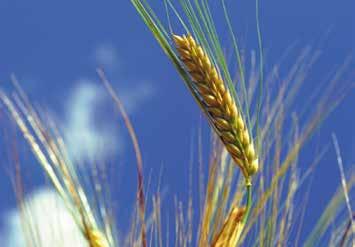
Foralmost30years,NewZealandownedGrosafeGroup hasthrivedbydemonstratingourstraightforward, practicalyetinnovativeapproachtothechallenges facingourcustomersandgrowers.
Ouruniquepositionistoleadwithnovel,more sustainableandhighperformingsolutions.Wetake prideinourapproachthatsetsusapartandstrengthens ourpurposebyutilisingourglobalpartnershipsand workingtogetherwithourcustomerstosupportyour localagriculture,horticultureandforestryneeds.
Keentoknowmore?
Contactuson info@grosafe.co.nz orFreePhone:0800220002 www.grosafe.co.nz
Local suppliers have worked hard to protect NZ from the pinch by stocking up ahead of time and sourcing direct from Europe, but the continued supply shortage from the past 12+ months is now hitting home, Murney says.
European olive oil manufacturers are blending commodity oils such as refined canola oil with extra virgin olive oil to bolster supply and meet demand. NZ does produce a small
amount of homegrown olive oil, but supply is well short of domestic demand.
Murney says Good Oil sales into the local hospitality market increased 300 per cent in 2023 and the start of 2024 as restaurant managers look for ways to reduce their food inflation burden while retaining quality ingredients.
The company’s oils provide unique flavours, ‘gorgeous’ colour, a high smoke point, and significant cost savings for both restaurants and home cooks.
Local production also ensures fresh oil is at its best, and far less distance to travel from paddock to plate.


8 AgriBusiness May/June 2024 ®
FocusedonFarming'sFuture INDUSTRY NEWS
Chefs and home cooks alike have driven massive growth in sales�



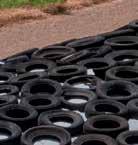





PASTURE’S
PERFECT PARTNER




















this month we look at...
CALVING



Make sure farmers get the whole story on colostrum replacers
AS WELL AS IMMUNOGLOBULIN G (IGG)*, WHICH IS ESSENTIAL FOR IMMUNITY AND SURVIVAL, WHOLE COLOSTRUM PROVIDES OTHER ESSENTIAL COMPONENTS INCLUDING ANTIMICROBIAL FACTORS, A RANGE OF HORMONES, GROWTH FACTORS AND ESSENTIAL NUTRIENTS.
Agrivantage explains why this matters for your customers this season, and how you can help them get their calves (and kids and lambs) off to the best possible start.
Although it may be tempting to recommend a colostrum powder based on price or IgG levels, it’s important to know whether the many other essential components present in a whole colostrum, which are also vital for the newborn, are included in the replacer or supplement.
These other essential components include:
Antimicrobial factors, which help protect the calf against disease and even immune cells from cows. It is thought that these play an important role in supporting the immune system of the calf.
Hormones and growth factors - such as insulin and insulin like growth factor (IGF) – which are present in colostrum at levels
much higher than that found in the blood of the dairy cow, ewe or doe. These play an important role in gut maturation and nutrient absorption, as well as stimulating cell proliferation and growth, and regulating energy metabolism.
Essential nutrients - including proteins and trace elements – which are essential for an optimal start for any mammal. Importantly, colostral fat provides a vital source of rapidly available energy and fuels the metabolism of brown fat to help the calf, lamb or kid generate heat and maintain their body temperature.
A high concentration of omega-3 fatty acids and a lower concentration of short-chain fatty acids, such as butyrate in colostral fat, are thought to play an important role in supporting the absorption of immunoglobulins and helping to counteract stress in early life.
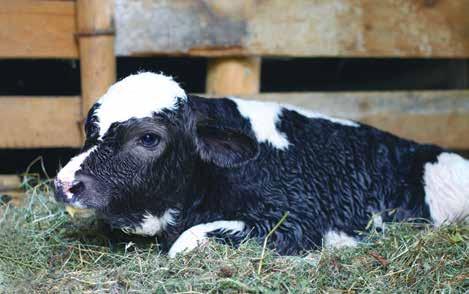
Oligosaccharides, or complex sugar molecules found in whole colostrum are thought to play an important role in helping to establish the gut microflora and may also enable the absorption of IgG.
So, when recommending a colostrum replacer, it is important to consider:
• IgG concentration – is the concentration high enough to ensure that the calf, lamb or kid can consume enough within 12 hours birth to achieve passive transfer?*
• Fat source and concentration – high levels of colostral fat ensure adequate energy supply but also provide essential factors which fuels the metabolism of brown fat, something which ordinary butter fat (often used in colostrum supplements) does not do.
• The presence of natural growth factors –these are essential for early development, but colostrum replacers which are reconstituted from immunoglobulins, milk protein powders and butter fat don’t contain these natural growth factors.
Moral of the story? Recommend a whole colostrum powder to farmers. Their animals’ health, growth and subsequent performance will be a lot better for it.
*Adequate intake of colostrum, specifically IgG, is the key factor in preventing infection in calves in the first four to six weeks of life. As a rule of thumb, within 12 hours after birth, 40 kg calves should receive a minimum of 100 g of IgG. Lambs and kids (approximately 4 kg) need 10 g IgG.
For more detail visit www.agrivantage. co.nz.
Newborns need more than Immunoglobulin G
10 AgriBusiness May/June 2024
CALVING
Four decades on, still going strong
TAKE YOUR MIND BACK TO 1984. POLITICALLY, IT WAS QUITE THE TIME – PRIME MINISTER ROB MULDOON THREW A SNAP ELECTION, A RECORD NUMBER OF NEW ZEALANDERS TURNED OUT TO VOTE, AND THE DAVID LANGE-LED LABOUR GOVERNMENT USHERED IN A WAVE OF ECONOMIC UPHEAVAL.
Meanwhile, that same year, a small company in the North Island began making a name for itself designing and manufacturing calf rearing equipment.
Starting with pen feeders, Stallion Plastics pioneered the tread and caps system that allowed quick and easy teat changing, then moved on to develop high quality mobile feeders.
Fast forward to 2008. Stallion merges with KBL. Current CEO Grant Allen and operations director Jeff Rowan integrate the existing suite of calf rearing products with the KBL range of water troughs and tanks, making Stallion a fully year around brand.
This in turn led to a more stable and busy work force, cash flow and efficient manufacture and stock holding.
Having already focussed on innovation, Stallion continued breaking new ground when it launched the game changing mixer tanker, followed by the
mixer feeder range.
“The impact of this was immediate, and gave the business a significant competitive edge especially in growing the export market,” Allen says.
Between the trans-seasonal range of products, and exports market year round demand for calf rearing equipment, the company was able to expand in late 2018 and early 2019 with a new factory and large modern rotational moulding oven.
“This almost instantly increased our scale, and opened new opportunities, allowing us to speed up and expand supply in particular for our existing international client.”
Then came COVID-19.
“The uncertainty of logistics and supply chain issues meant businesses placed larger orders and were carrying more stock, ourselves included, and with so many key international markets putting stimulus and support packages in place, Stallion
Latest additions for calving 2024

weathered the storm well and had some of the better years of recent times.”
As of 2023, Stallion export sales equalled those in the domestic market, and going forward, the team aims to continue growing that category to 60 per cent of the overall business.
Regardless of where the products are marketed and used, 40 years after it began, one thing remains a real point of pride for all those involved in the company, Allen says.
“We manufacture world-leading products from our factory in Palmerston North. Our frames are cut and welded before going off-site to get galvanised; the plastic tanks, manifold and troughs are rotation moulded on-site and the injection moulded parts are manufactured for us by NZ suppliers.
“Virtually every part but the lids are made here in NZ. This way we can ensure Stallion remains a leader in quality as well as innovation.”
THIS YEAR, STALLION IS EXCITED TO BE RELEASING A TOWABLE VERSION OF ITS 250 LITRE MINI TANKER.
The pull-along version was developed for the company’s European market and has been available for two years.
“The mini-tanker has had strong sales of both the petrol and fully electric models in Europe, working well in the fully enclosed barn systems,” says Stallion’s Grant Allen.
“But feedback from the New Zealand market was that it needed to be able to
be towed down the race between shed and pens. So we’re very pleased to have been able to address that with the new model this season.”
Engineered with a galvanized steel frame, and a shaped tank that lowers the center of gravity to keep the balance over the axles, the towable Mini Tanker features the addition of wider tyres after on-farm testing.
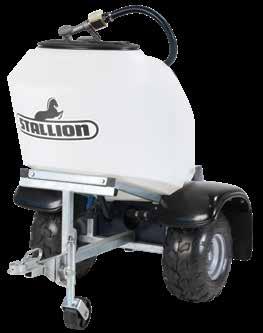
AgriBusiness May/June 2024 11 CALVING
Good to go –MilkTaxi a gamechanger for bucket feeding
BELL-BOOTH, MANUFACTURER OF NUTRIMOL AND QUEEN OF CALVES, AND SUPPLIER OF INLINE WATER DISPENSING BY INTERNATIONAL LEADER DOSATRON, IS MAKING LIFE EASIER FOR REARERS WITH ITS LATEST PIECE OF TECHNOLOGY.
The MilkTaxi is a mobile milk tank that the company says has revolutionised bucket feeding for calves across the globe.
As well as helping ensure optimal calf nutrition and efficient milk transport, it reduces the risk of disease.
Key features include being able to store milk at a chilled temperature; pasteurisation to help prevent disease transfer; easy
mixing of calf milk replacer; automatic cleaning, and nine volume settings for dispensing milk. It also keeps milk warm, and saves farmers having to lift and carry heavy buckets.
MilkTaxi comes in two different models, 260 litre and 400 litre, with multiple drive, dispensing, and cleaning configurations.

The 260 litre model is capable of pasteurising up to 520 litres of milk per day split over two feeds, whereas the 400 litre model is capable of pasteurising up to 800 litres of milk per day split over two feeds.
Bell-Booth general manager of sales, Nick Crosswell, highlights the pasteurisation feature as one of the MilkTaxi’s best, addressing the crucial issue of bacteria in calf sheds. While the machine itself is new to New

Zealand, its manufacturer, German company Holm & Laue, has a proven track record of providing innovative, reliable solutions to Kiwi dairy farmers, he says. Pasteurising at a temperature of 63°C for 35 minutes using the batch method destroys 99.5% of dangerous pathogens.
As an alternative to this programme, the MilkTaxi offers two different heat treatment methods at 60°C for 60 or 70 minutes. All the starting times can be freely programmed, so milk is already pasteurized when rearers arrive in the shed for morning feeding.
MilkTaxi’s 250 watt agitator mixes any milk replacer lump-free in seconds, and supports the heater through short mixing intervals which in turn are adapted to the milk quality.
Its location in the base guarantees maximum working safety and means nothing gets in the way during tank cleaning.
The MilkTaxi works with a surface heater over the entire base area.
Unlike with spiral heaters, this prevents the occurrence of ‘hotspots’ where milk can burn and
stick, so milk heats up quickly and quality is maintained.
Four stable wheels and the electric drive ensure smooth travel, and all models can be moved forwards and backwards at two different speeds, saving time, labour and back strain.
With a low centre of gravity, MilkTaxi will not topple even when moved quickly, over uneven terrain and fully loaded.
Uneveness or small thresholds are not a problem, thanks to the 40 cm front wheels and generous ground clearance, and these front wheels can now be fitted with tractor tread tyres, the company says.
“This can be useful where very soft or even muddy ground needs to be negotiated to reach the calves.”
Holm & Laue is a quality brand Bell-Booth has worked with for more than a decade, Cresswell says.
“Their automated calf feeders have been saving NZ dairy farmers countless hours of manual labour during calving season for more than 13 years.”
For more detail visit www.bellbooth.co.nz.
Thanks to the Honda pump and patented mixing system used in all Stallion mixer tankers and mixer feeders, this little work horse will mix 250 litres of milk powder in three to five minutes, and eliminates the need to stand around using a drill and paint mixer for 30 plus minutes, Allen says.
“The MT250 series delivers your farmers’ mixed milk powder, colostrum or whole milk via the de-
livery hose and dispensing nozzle at up to 400 litres a minute so there’s no need to lift buckets, either.”
The mini-tanker comes standard with a flowmeter for accuracy when filling pen feeders to ensure that calves are getting the right amount of milk, especially in those first few weeks before their rumens are fully developed and they’re able to get the most out of meal.
Having picked up the distribution for Peach Teats, Stallion is also distributing a Scour Testing Kit for calves this season.
“The kit works much like a COVID test, but at the other end,” Allen says.
“It tests scours for five of the main causative pathogens, namely rotavirus, bovine coronavirus, cryptosporidium, E. Coli K99 and giardia.”
All farmers have to do is simply
swab some of the scours from as close to the source as possible, and add this fecal material to the buffer solution.
After letting the sample stand for a few minutes, they draw off a sub-sample, add a few drops to each of the testing lines on the cassette provided with the kit and receive a result in five to 10 minutes.
For more detail visit www.stallion.co.nz.
12 AgriBusiness May/June 2024 CALVING
ProCalf and the goals of calf rearing
WORDS: Donaghys
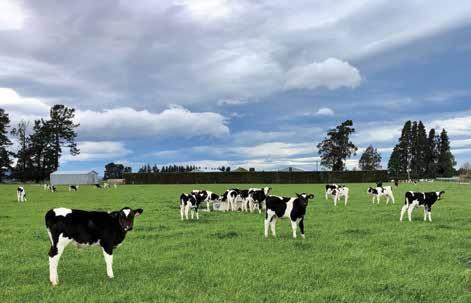
Grass is cheaper than milk or meal and having a calf that can be weaned sooner reduces labour inputs, all making the rearing process less time consuming and more cost effective.
Weaning calves sooner is all about developing the calf’s rumen.
The rumen is an out pouching of the oesophagus that develops over time.
Calves are born with a small rumen which must increase in size up to 20 fold before that calf can be weaned.
ProCalf from Donaghys is a product than can
help calves develop their rumens quicker. ProCalf contains a blend of yeast, bacterial extracts, enzymes and AgResearch-licenced live microbes, all vital parts of a developing healthy rumen.
ProCalf also contains rennet which improves digestion and reduces the chances of calves developing nutritional scours.
In a trial treated calves were 6.7 kg heavier than untreated controls at 6 weeks after the start of the study.
The most telling statistic for ProCalf was that at this time 80 per cent of the treated
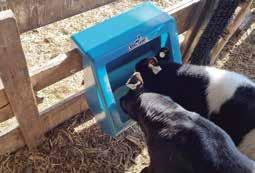
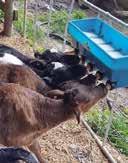
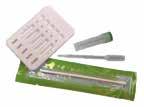
calves were able to be weaned compared to only 27 per cent of the untreated controls.
Being able to wean calves earlier significantly improves the cost effectiveness of the calf rearing process by reducing milk, meal and labour inputs.
In another study completed by AgResearch, calf intakes were shown to be increased by 6.3 per cent in calves treated with ProCalf. Increased intakes mean more meal eaten and this in turn means that calves are able to be weaned sooner.
ProCalf is an easy to use product mixed with milk.
Calves are given 5 mL as an initial dose on arrival at the calf rearers or their first whole milk (not colostrum) feed, and are then given 2 mL per head per day till weaning.
If calves are noticed to be unthrifty or are suffering from dietary scours they can be given ProCalf as a supportive treatment at a rate of 5-10 mL per head per day.
ProCalf is available in one, 10 and 20 litre pack sizes as well as a convenient five litre backpack.
Although rearing calves is a complex and intensive process, we should remember what the end goals are - a healthy weaned calf, growing at the required growth rate on a solely grass diet.
ProCalf is a product that can help your customers improve the efficiency of their calf rearing system this spring.
For more detail visit www.donaghys.com.
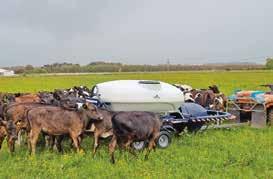
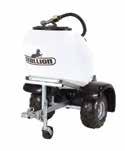
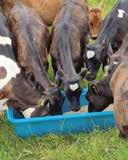
AgriBusiness May/June 2024 13
THE GOAL OF CALF REARING IS TO PRODUCE A HEALTHY CALF THAT CAN GROW AT THE REQUIRED RATE SOLELY ON A DIET OF GRASS AS SOON AS POSSIBLE. CALVING WANT TO FIND OUT MORE? VISIT US ONLINE TODAY! NEW TOW OPTION www.stallion.co.nz NEW! SCOURS CALF TESTING KIT 40 YEARS O F KIWI I N NOVATIO N CELE B R A TING






DON’T GET CAUGHT OUT - Make sure you are up-to-date!
• Over 140 new listings
• 160 deleted products
• 100 existing labels updated (new weed, pest & disease claims)
Plus the latest regulatory amendments
The definitive guide to agrichemicals registered for use in New Zealand.
A comprehensive alphabetical listing of products, active ingredients, crop & weed tables, weed & pest identification and much, much more all in one single publication. It really is the definitive agrichemical guide and the only one you’ll ever need.
Purchase a manual to receive a FREE 12-month subscription to our subscriber only website.
The website is continually updated and contains product listings, a fully searchable online product manual, a powerful search engine of weeds, diseases & pests, including photo galleries with all the agrichemical options to use on individual crops as well as up-to-date SDS’s, Haznotes and product labels, plus posts about industry news and information.
ORDER NOW to receive your FREE pair of SureShield Coveralls
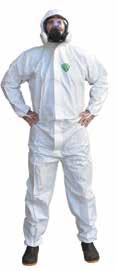
SureShield Coveralls supplied by pH7, provides both protection and comfort with exceptional liquid and particulate protection. Ideal for a wide range of industrial applications. One size fits all.
Shigematsu Respirators supplied by pH7.
* Available to those who order directly from www.novachem.co.nz - while stocks last.
Storing Chemicals?
Print up-to-date SDS’s & Haznotes from novachem.co.nz to ensure you are compliant.
14 AgriBusiness May/June 2024
2024/2025
SUBSCRIBE ONLINE www.novachem.co.nz

Trial diverts thousands of dead collars from e-waste steam
MSD ANIMAL HEALTH NEW ZEALAND HAS PARTNERED WITH AGRECOVERY IN NZ’S FIRST PILOT TO RECYCLE SENSEHUB
DAIRY COLLARS (PREVIOUSLY KNOWN AS ALLFLEX COLLARS) USED BY ITS DAIRY FARMER CLIENTS.
About 17 per cent of NZ milking cows are now collared�
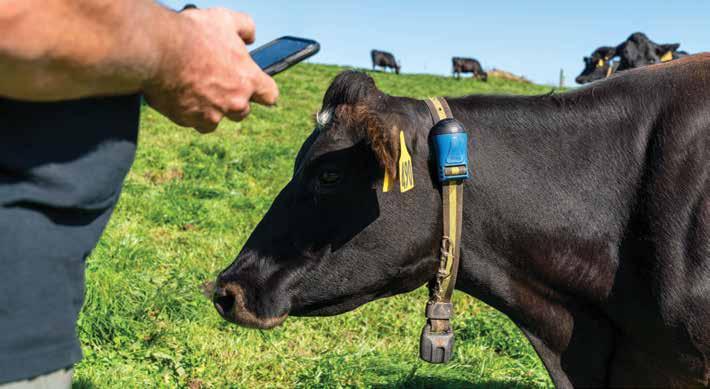
The initial pilot project is set to recycle 10,000 cow collars that have reached the end of their battery life this year and will provide a template for recycling all types of e-waste off farms as digital, data driven farming becomes common place.
Cow collars are increasingly used by NZ farmers to help manage animal wellbeing, track productivity and control animals onfarm.
About 17 per cent of the national milking herd now wear collars.
Pauline Calvert, MSD NZ livestock business unit lead, says waste minimisation and supporting sustainability efforts is a priority for MSD Animal Health.
“MSD Animal Health has been working with Agrecovery since 2006 to recycle some of its animal health products’ packaging.
“Recycling cow collars is a natural progression for us as an industry leader to implement solutions for on-farm electronic materials. It’s core to our business and we want to help our customers also meet their sustainability goals so that collectively we are making a difference.”
Agrecovery chief executive Tony Wilson says farmers have an increasing amount of electric componentry on-farm.
This can range from collars to cell phones, EID readers, sensors in their yards and milk-
ing sheds, batteries and tracking devices. Electronic waste will continue to increase as farming moves to more digital based, data driven operations.
“All these components have metal, plastic, and a circuit board inside them. What MSD Animal Health is doing with this pilot with Agrecovery is directly transferrable to all those other products,” he says.
Agrecovery has developed a process which takes about five minutes to deconstruct each SenseHub Dairy collar, separating the buckle, steel weight, various plastics, and electronics. The electronics also have their plastic covers removed for separate recycling.
The componentry is then sent to the relevant recyclers where it can be recycled and used in new products.
Working through Agrecovery, collars will be collected at a North Island and South Island site, with MSD Animal Health collecting the collars from their customers as they come up for renewal.
The scheme also means farmers can demonstrate they can meet their milk processes environmental initiatives such as Fonterra’s Co-operative Difference scheme, which pays farmers a premium for achieving targets around milk quality, sustainability, animal welfare, and health and safety.
“Through our collaboration with Agrecov-
ery we will know which farm the collars have come from, and how many collars they have recycled,” says Calvert.
“Our dairy farmer customers can then use this information to meet their own sustainability goals and continue to make a real difference to our future.”
The government has a compulsory stewardship programme for animal health products that comes into effect from September this year under the Waste Minimisation Act, and Agrecovery is an accredited provider; however, there is not a compulsory scheme for e-waste, yet.
The Ministry for the Environment is expected to consult on regulations to support ewaste product stewardship in 2024/25.
“While these stewardship schemes are regulated by government, we also know it’s the right thing to do and our consumers are demanding it. E-waste isn’t yet included in the product stewardship scheme, but we wanted to get ahead of the game by completing this pilot,” Calvert says.
“This cow collar recycling pilot is about the future of our industry and making recycling e-waste convenient and easy for the farmer. We take our social responsibility seriously and this includes minimising our supply chain footprint and reducing the liability on our farmer customers.”
AgriBusiness May/June 2024 15
PRODUCT UPDATE
Working smarter, not harder
TIMES MAY BE TIGHT, BUT THERE’S STILL A MARKET FOR NEW, CLEVER THINGS THAT MAKE LIFE EASIER ON FARM WITHOUT BREAKING THE BANK.
That’s the experience of Wairarapa shearer turned problemsolver Sean Blenkin, of Stock Ezy.
Winner of the No. 8 Wire section of the Southern Field Days Innovation Awards at Waimumu, Blenkin specialises in supplying high quality equipment to take some of the hard work out of routine farm jobs for both humans and animals.
His winning piece of kit at Waimumu was Stock Ezy’s Flow Control Gate, which makes bottlenecks in sheep races a thing of the past, seamlessly merging multiple animals into single file. Once installed at the back of the race, the gate swings left and right, letting sheep through on one side of the gate while blocking sheep on the other side, and vice versa.
The end result is consistent stock flow, saving time and labour, with less stress for people, sheep and dogs alike.
The gate can be used for any drafting purpose and accommodates any size sheep, Blenkin says.
2K Design and Manufacturing
Engineers in Masterton does the initial metalwork, then he assembles and distributes the gate.
Like most apparently simple solutions, this one took a while to perfect.
“It took me about six months to get it right with help from farmers allowing me to use their sheep and yards.
“I finally knew we had succeeded when the comments started coming back!”
From ‘I didn’t think something so simple could work so well’ to ‘the day we put this in the husband and wife relationship has never been so good in the yards’ and ‘you have saved us a labour unit’, hard-working farmers have given the Flow Control Gate the thumbs up.
Stock Ezy’s latest product comes in direct response to feedback from farmers at Mystery Creek last year, Blenkin says.
He was displaying the company’s Ewe Cradle, a simple, adaptable metal frame and fabric sling which helps reduce issues at lambing like sleepy sickness and cast or bearing ewes, as well as
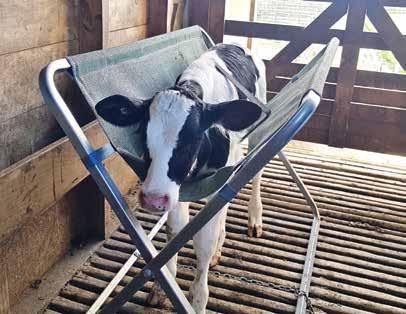
mothering on lambs.
Farmers who saw it wanted something just like it for sick calves, so this season, they get their wish.
Like the Ewe Cradle, the Calf Cradle features breathable fabric and height and weight adjustment, plus it comes with head
support to keep upright calves comfortable.
“It can be used to help calves with contracted hoof tendons, tube feeding, scours and other common problems,” Blenkin says.
For more detail visit www.stockezynz.com.
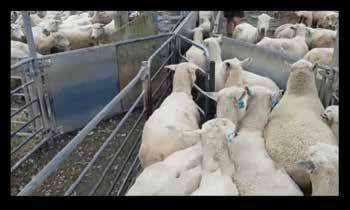
The future of wintering?
DOZENS OF FARMERS FROM AS FAR AFIELD AS DUNSANDEL AND SOUTHLAND CONVERGED ON THE WAITAKI PLAINS LAST MONTH TO LEARN MORE ABOUT A TRANSFORMATIVE WINTERING FEED PAD SYSTEM ON A LOCAL DAIRY FARM.
In partnership with NumatAGRI Construction, the open day at Rogan and Michelle Borrie's property highlighted significant advances in farming efficiency and animal management, the company says.
Key topics discussed included economic benefits, enhanced milk yield and pasture utilisation, and team adjustment and learning curve.
The Borries, who milk 500 cows on this particular farm, discussed the significant cost savings achieved by keeping cows on-farm
and utilising the feed pad.
They also emphasised how the system improved milk yield and cow welfare.
Strategic use of the feed pad allowed for better pasture management, and made land use more efficient and sustainable.
The transition to the new feed pad was a learning journey for the farm team.
The Borries shared their adjustment experiences, underscoring the importance of adaptability and the lessons learnt throughout their first season with the system.
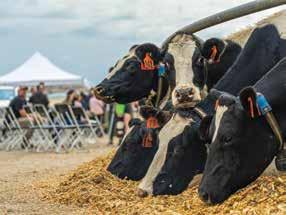
After a season of use, the Borries were confident there was nothing they would change about the system, and were satisfied with its design and functionality.
For more detail visit numatagri.co.nz.
16 AgriBusiness May/June 2024
PRODUCT UPDATE
Flow Control Gate merges animals like a zip�
Calf Cradle keeps sick youngsters comfortable on their feet �
Making every blade of grass count on challenging country
KARAPIRO DAIRY FARMER
TRENT PATERSON IS MASTERING PASTURE MANAGEMENT AND GETTING MORE FROM EVERY SQUARE METER OF GRASS THANKS TO THE POWER AND RELIABILITY OF GALLAGHER’S LITHIUM SOLAR ENERGIZER TECHNOLOGY.
Paterson milks 300 Jersey cows once a day, runs 350 deer for velvet, and grows around 100 Jersey bulls on his 230 ha farm in the Waikato.
The farm's landscape has rolling hills and valleys, presenting plenty of challenges with power and accessibility.
About half of the farm is fenced with two or three wire electric fences and the balance is traditional deer fencing.
Paterson also grows 12 ha of maize silage every year and harvests 80 tonnes of grass silage.
“Managing my grazing round length has become key to the business. I don’t break feed the deer but everything else is break fed. I don’t measure pasture by plate meter, but I do look at my residuals and have trained my farm manager to look at residuals too,” he says.
“For me, that’s the key to growing quality pasture and lots of it!”
Paterson uses a Gallagher Lithium Solar Fence Energizer to power up his break fences, solving his issues with power and accessibility and keeping his mobs where he needs them to ensure they efficiently graze every paddock.
“Making sure we're getting good power to the back of the farm can be quite difficult at times. Using an off-grid, Lithium Solar Energizer ensures plenty of power on my break fencing without an issue,” he says.
Managing his pasture efficiently means ensuring mobs are fully eating down their breaks to target residuals.
“The feed you leave in a paddock is more
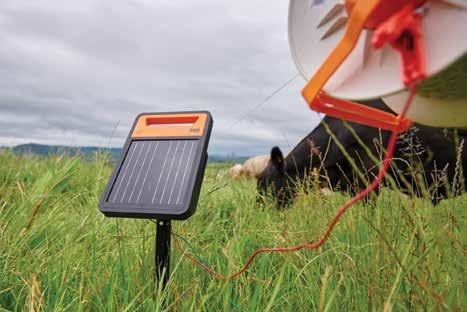
Lithium Solar Energizers come in a range of sizes�
important than the new grass you’re shifting your mobs onto. If you’re moving mobs too quickly and they’re not eating the pasture down far enough, the pasture is going to be poor when they come back for the next round because they’ve left too big a residual,” he says.
The length of his rounds change depending on the season.
“In the spring you're going into a good period of growth, and you can speed up your rounds. Then coming into late summer when you dry off, you push the round out. Then I use my supplementary feed to fill any gaps.”
His herd produces an average of 85,000 kg

milksolids milking once a day.
“I don't target high per cow production or even high production per hectare. The kind of country we farm is just not meant for that. However, more effectively managing our pasture and making the most from every square meter with the help of portable fencing and break feeding has definitely helped us boost grass growth.”
With the Lithium Solar Energizer range up to 53 per cent lighter than previous lead-acid models plus a longer lasting battery that is 300% faster charging, it’s much more efficient.
Smaller size and lightweight design makes it easy to transport, too.
The energizer also delivers a consistent 7000 to 8000 volts on Paterson’s fencing, in all weather, providing a reliable deterrent for livestock.
“The Lithium Solar Energizer is pretty much ready to use straight out of the box. After only a few hours sitting in the sun you’ve got incredible battery longevity and reliability, even on cloudy days. It’s an ideal, self-sufficient power solution for us,” he says.
“The Lithium Solar Energizer keeps my mobs where they need to be and helps me execute my pasture management strategy with ease, making every blade of grass count toward my bottom line.”
Small size and lightweight design improve efficiency and transport �
AgriBusiness May/June 2024 17
PRODUCT UPDATE
Celebrating 90 years tough
WORDS: John Bull Footwear
BACK IN 1934, TWO BROTHERS PROMISED TO MAKE THE HARD YARDS A LITTLE EASIER FOR HARD-WORKING NEW ZEALANDERS. AND TO STEP UP WHENEVER THEIR HOME CALLED UPON THEM.
Having learnt their trade in Auckland, the Daisleys opened their own boot making factory on Khyber Pass Road.
With farming and industry booming, people needed footwear that could handle the rugged country and harsh conditions.
And that’s just what the Daisleys delivered: boots that were made for our kind of grit and were built to last.
It wasn’t long before the high quality of their footwear was
becoming well known across the country.
In 2024, John Bull Footwear celebrates 90 years—nine decades of being tried, tested, and proven to give our wearers boots that protect and perform, look great, fit great, and offer great value.
This evolution of innovation has cemented the brand as a true New Zealand icon.
We recognise that this 90-year journey would not have been possible without the support of our customers and our wear-

ers—after all, it’s the people that bring our brand to life, through hard work, determination, grit, and toughness.
Today, we’re proud to be NZ’s most loved safety boot.
The footwear we produce is tougher than ever, but with new technologies that make them easier to wear.
We’re always researching new ways to improve comfort, protection and performance.
To celebrate 90 years, we’ve given a new look to our best-selling Crow style—featuring gold stitching and anniversary motifs.
Like the Crow, our Limited Edi-
tion 90th boot features our award-winning CushionCore 3.0 technology, a cushioning QuadMax footbed and Coolmax lining for premium comfort. Safety features include a TPU outsole heat-resistance up to 140°C, a steel toe cap, and electrical hazard resistance.
The anniversary boot is available from selected John Bull retailers – for more detail visit johnbullco.nz/stores/.
Because the promise made 90 years ago still stands.
We’re here to keep New Zealanders stepping up and taking the bull by the horns.
Procrimp pioneers the path forward
FOR PROFESSIONALS AND LIFE-STYLERS ALIKE, THE IMPORTANCE OF RELIABLE EQUIPMENT CANNOT BE OVERSTATED.
Based in Upper Hutt, Strainrite Fencing Systems offers a range of crimping tools known for their exceptional quality.
Among its arsenal the Procrimp F3020 emerges as a standout solution for fencing projects, setting a new standard for efficiency and convenience in wire crimping tasks, the company says.
Tailored for fencing contractors and applica-
tions in the agricultural and horticultural sectors, the Procrimp F3020 embodies a blend of innovation and practicality.
“What sets this tool apart is its seamless integration of the Infaco Electrocoup F3020 handset with a specialized crimping head that facilitates rapid and precise crimping, streamlining installation processes and saving valuable time.”
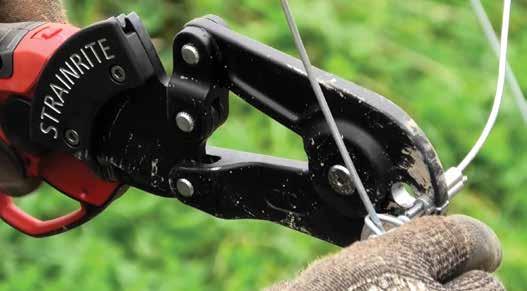
Beyond its practical benefits, the Procrimp F3020 represents a testament to innovation in the field of fencing technology.
One of the most notable features of the Procrimp is its ergonomic design, engineered to minimize strain and maximize comfort during operation.
Sporting a one-handed grip with a convenient finger trigger, it alleviates the physical exertion typically associated with manual crimping tools.
“This design not only enhances user experience but also enables greater dexterity, allowing the operator to focus on guiding the tool with precision while maintaining control over the wire being crimped,” Strainrite says.
“With the Procrimp, efficiency and ease of use go hand in hand, making it an indispensable companion for tackling all wire crimping projects, large or small.”
Strainrite has created a solution that not only meets but exceeds the evolving needs of professionals across industries.
With its blend of reliability, convenience, and performance, the Procrimp redefines the standard for wire crimping tools, earning its place as an essential component of any fencing toolkit.
For more detail visit strainrite.co.nz.
18 AgriBusiness May/June 2024
PRODUCT UPDATE
Disease risk model to help apple, grape growers
A FREE INTERACTIVE TOOL HAS BEEN LAUNCHED TO GIVE APPLE AND GRAPE GROWERS AND PROSPECTIVE INVESTORS INSIGHT INTO HOW CLIMATE CHANGE MAY AFFECT THE RISK AND COSTS OF LIVING WITH COMMON PLANT DISEASES IN DIFFERENT PARTS OF NEW ZEALAND.
Created as part of the Our Land and Water National Science Challenge, the Changing Climate: Disease Risk and Costs tool allows people to enter their orchard or vineyard’s address to view the risk of apple fire blight, grape powdery mildew and grape botrytis on their crops under different climate change scenarios.
It also translates that risk into financial terms, helping people understand how climate change may affect the cost of managing plant diseases on their land in the decades ahead.
“In simple terms it’s a portal into the future,” says Mike Barley, director of NZ agri-tech company HortPlus.
“It helps with climate adaptation planning and provides easy to digest information for people in the apple and winegrowing industry who want to understand how plant disease risks are likely to change, and im-
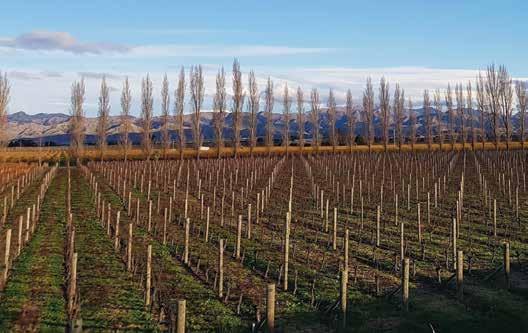
NZ viticulture is worth more than $2 billion in exports�
portantly, what the cost implications of those changes might be.”
HortPlus developed the tool in collaboration with Plant & Food Research, NIWA, The Agribusiness and Economics Research Unit and Applied Research and Technologies.
Agribusiness and Economics Research Unit researcher John Saunders says the tool’s combination of GIS risk mapping and climate, disease and economic modelling make it unique.
“The aim is to let people get a bit of an idea about what the future holds before it arrives. If you are buying a house, you would check flood maps. Why shouldn’t we have rich information about the likely impact of plant diseases for horticulturalists?”
Saunders says the economic modelling used takes a range of factors into account, including likely increases or decreases in the costs of disease control measures, such as spraying, as well as changes in crop yield that might result in different climatic conditions.
As well as being a helpful resource for growers and investors, he says the tool will also help central and local government planners understand how plant disease risk is changing regionally and nationally, and how much it might cost to mitigate those risks in the future.
“NZ’s viticulture industry is worth more than
Rodent-targeting Generation Soft Bait –tested for real life
It was tested on wild rats.
And, Pieter Van Der Westhuizen, UPL NZ regional manager upper North Island says, that attention to detail makes all the difference.
An advocate of Generation Soft Bait, he says
the product is a lot more tempting – but only to rodents, not non-target animals including farm dogs and companion animals.
“I use Generation Soft Bait on my own property. I have dogs and cats, aviaries and chick-
$2 billion in exports and our apple industry almost $1 billion, so they are both consequential to the country’s economy.
“Resources like this can help with strategic thinking. In many ways the success of sauvignon blanc was just a happy accident in New Zealand. We could help find the next opportunity more quickly with better data and a more planned approach.”
While increases in average temperatures typically resulted in higher costs for management of plant diseases, there are some exceptions, Saunders says.
“The slight silver lining is that some regions may become more viable for certain crops as the climate changes.
“North Canterbury might become more suitable for growing grapes, for example.”
Even in areas where the costs of managing disease were increasing, profitability would still be possible in many cases, Saunders says.
The Changing Climate: Disease Risk & Costs tool was funded by the NZ Ministry for Business, Innovation and Employment as part of the Our Land and Water National Science Challenge. Its development was informed by leading researchers, as well as iwi and leaders from across the pipfruit, viticulture, kiwifruit, forestry, nuts, avocado, arable, and education sectors.
ens. There have been absolutely no safety issues using Generation Soft Bait. There are no other products on the market like it.
“The original Generation Block Bait still has its place, but Generation Soft Bait has quantifiable advantages.
“And being tested on wild populations - not just lab rats, which is usual - the process was a lot more rigorous and better reflected real life situations.
“Scientists took into consideration wild rat behaviour including the feeding ‘pecking order’. Rats are neophobic - mistrusting anything new – so, bait attractiveness is vital.
“And, because the effects of Generation Soft Bait are delayed a bit, once the dominant rats have fed, other rats gain in confi-
AgriBusiness May/June 2024 19 PRODUCT UPDATE
Photo Kathy Davis.
GENERATION SOFT BAIT WASN’T JUST TESTED ON LAB RATS. (THAT WOULD’VE BEEN EASY.)
Backing a joint effort against diamondback, for the greater good
A LIGHTER TOUCH (ALT) IS BEING CREDITED WITH CONNECTING THE DOTS BETWEEN THE CROP PROTECTION AND CROP PRODUCTION INDUSTRIES AND GOVERNMENT TO PARTNER IN A PROJECT TO TEST THE REGULATORY PATHWAY FOR NOVEL BIOPESTICIDES IN NEW ZEALAND.
The newly-approved ALT project will see a new-to-NZ bioinsecticide for the control of diamondback moth, a priority pest in brassica crops, taken through the regulatory pathway with the goal of achieving registration.
Investing in the project are product group member Vegetables NZ, crop protection partner Key Industries, and the A Lighter Touch programme, which is co-funded by the Ministry of Primary Industries, as a Sustainable Food and Fibre Futures project.
Frank Visser, managing director of Key Industries, says the project is a great illustration of the role ALT has played in bringing together a number of industry players for the good of the wider sector.
“We are constantly fighting against silomentality in our industry, and seeing a variety of significant organisations pooling their skills and resources is refreshing to say the least.”
The project plays a significant role in an A
dence and follow their lead.”
He explains rats actively preferred Generation Soft Bait to other food sources in trials and it far outperformed any other baits.
He says the specially developed vegetable oil and crushed grain-based formulation gets rats’ attention faster, with the soft bait’s paper ensuring the tempting aroma disperses more widely.
Van Der Westhuizen says it’s also very easy to deploy by skewering the plasticine-like bait on the metal rod, or wire, within the Generation bait station.
“It’s quick, clean, and convenient.”
The smallest non-dispersible bait on the market, Generation Soft Bait kills effectively and in a single feed.
Generation Soft Bait won’t leak or melt and has very good moisture and heat tolerance which
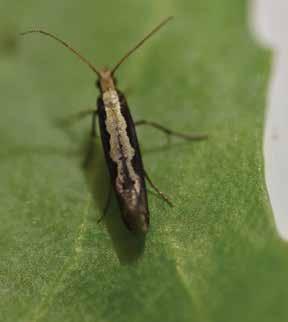
Lighter Touch work stream focusing on increasing the availability and use of biological control agents (BCAs) for pest management, as part of agroecological crop protection.
The product, manufactured by Swiss company Andermatt and to be registered and distributed here by Key Industries, will be used as a case study to provide guidance for industry in taking a product through the NZ regulatory system.
It will focus on three primary components, being:
• New Organisms;
• Hazardous Substances; and
• Registration under the Agricultural Compounds and Veterinary Medicines regulations.
The project also provides the added benefit of developing and registering a new mode of action bioinsecticide for a priority pest.
In using a case study approach, A Lighter Touch aims to provide guidance to industry
makes it practical in a wide range of applications.
It also contains Bitrex, a bittering agent, that reduces the risk of consumption by non-target animals including domestic animals like cats and dogs.
Generation Soft Bait is the most advanced anti-coagulant on the market, using difethialone 25 ppm as its active, which rodents can’t detect. There is no known genetic resistance among rodent populations.
Destructive, dirty, and disease-carrying, rodents are among the most serious mammalian pests known to man. A single rat can produce 50 droppings and 50 mL
of urine daily.
on how to navigate the complexity of the regulatory pathway in a faster and more cost effective manner.
Stuart Davis, of Vegetables NZ, agrees the project is unusual in the level of co-investment that the industry body is proposing to make alongside the NZ agent.
“This speaks to the importance industry sees in working towards a future regulatory framework that allows for a simpler pathway for biological control options and providing for future control of this important pest.
“A Lighter Touch has really been the glue that has brought all the parties together, working through issues as they have arisen to reach a point where the programme’s governance board has given its approval for the project to proceed.”
The three to four year project has a series of stop/go points within it to ensure efficient and accurate spend of investment by all parties.
Van Der Westhuizen says rodents probably cause much more damage than we’re aware of, including fires in vehicles and buildings due to electrical wires
being chewed through.
That’s on top of the more obvious damage to buildings, loss and contamination of feedstuffs, and posing a threat to native birds and other fauna.
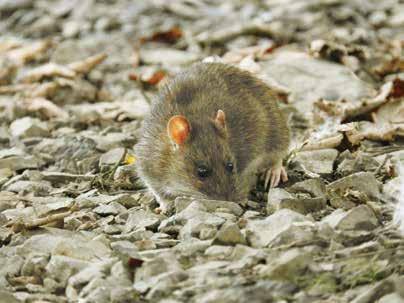
20 AgriBusiness May/June 2024 PRODUCT UPDATE
Diamondback moth is a priority pest in brassica crops�
Research.
Photo:
Plant & Food
Kiwifruit spray decision still up in the air
AFTER MORE THAN 30 SUBMISSIONS OVER FIVE DAYS, THE KIWIFRUIT INDUSTRY IS STILL WAITING TO FIND OUT WHAT THE FUTURE HOLDS FOR HYDROGEN CYANAMIDE, DESPITE THE PUBLIC REASSESSMENT HEARING HAVING WRAPPED UP IN MT MAUNGANUI ON 1 MARCH.
That’s because officials in charge of it have not yet formally closed the hearing. Instead, it has been adjourned.
Hydrogen cyanamide is widely used in kiwifruit as a budbreaker.
It can improve yields on green kiwifruit between 28 and 60 per cent, and gold yields between 25 and 60 percent, according to NZ Kiwifruit Growers.
Dr Shaun Presow is hazardous substances reassessments manager for the Environmental Protection Authority.
As of early April, he says the decision-making committee which held the hydrogen cyanamide
But there is no statutory limit on the amount of time which passes between adjournment and formal closure.
Presow says it’s not unusual for a decision-making committee to do this, rather than formally closing a hearing immediately after submissions have been heard.
When Actara insecticide was reassessed, for example, the one-day hearing was held on 30 March 2023 but was not formally closed until 24 May, with a decision published 3 July.
A wide range of industry groups at the hydrogen cyanamide hearing argued against the proposed ban, including New Zealand Ki
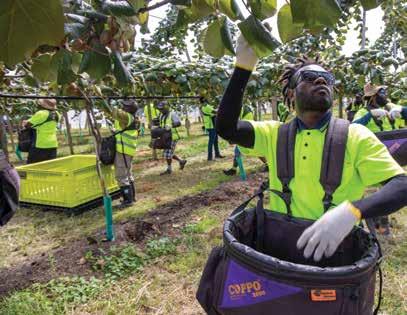
Ban would be ‘devastating’ for the industry, Zespri says�
and their communities.
Zespri chief operating officer Jason Te Brake told the hearing there is no lawful basis for the EPA to phase out or ban hydrogen cyanamide.
“We consider the EPA has overstated the risks here and significantly understated the benefits.
“A ban would be devastating for our industry, which is a major contributor to the NZ economy and rural communities, as well as our many growers out there who would be placed into quite significant financial distress as a result of this ban.”
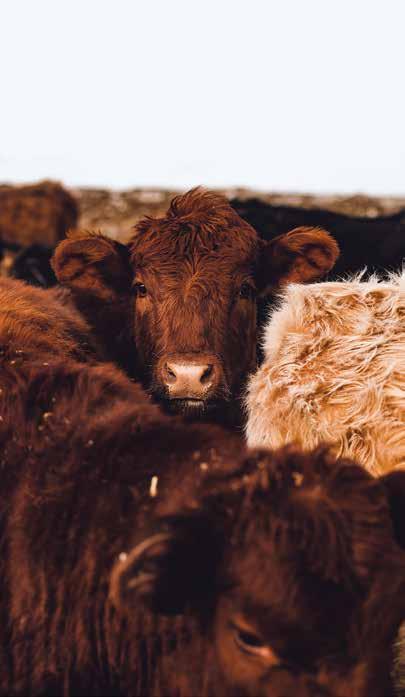
Zespri consultant Dr Mary Black told the hearing a ‘significant’ amount of work has been done to find an alternative budbreak enhancer to hydrogen cyanamide, to little avail.
“Zespri, global researchers, chemical companies and the kiwifruit industry have invested
in research into alternatives for well over a decade.
“This has been a challenging piece of research and it is one that hasn't yet yielded a product that could be considered as a good, comparable replacement.”
Zespri had also spent over a decade researching a replacement green variety that is less reliant on winter chill.
“We are now in a position where grower trials commenced in 2022.
“The very earliest that we could expect to be in a position to make a decision around commercialisation is 2027 and the earliest we could expect to see some commercial volumes of fruit is 2033.”
Only one submitter presented in favour of the proposed ban. Three others scheduled to argue for it at the hearing did not show up.
AgriBusiness May/June 2024 21 PRODUCT UPDATE
Right nutrition, at the right time
DAIRY FARMERS ARE USING SUPPLEMENTS MORE EFFICIENTLY, WITH LESS GUESS WORK, THANKS TO A SCIENCE BASED DECISION MAKING TOOL FROM SEALESWINSLOW, THE COMPANY SAYS.
Ruminix³ is tailored to New Zealand’s pasture-based farming operations.
Used by SealesWinslow at no cost to farmers, it compares the effects of feed combinations on milk production based on the variables of each farm’s unique system.
Ruminix³ assesses feed options across the board, not just SealesWinslow products.
Using the tool, SealesWinslow has demonstrated farmers could generate up to 30 per cent more income simply by using the right supplementary feed.
General manager Grant Jackson says while the payout is looking more buoyant, costs of production are still a challenge which makes farmers’ feed planning increasingly complex.
Using nutrition modelling based on equations from the Cornell Net Carbohydrate and Protein System (CNCPS), Ruminix³ demonstrates the possible return on investment from any feed simply by inputting variables such as kilograms of dry matter (kg DM), metabolisable energy (ME) and starch content.
The CNCPS System is used by NZ nutritionists and is widely accepted as an accurate predictor of milk production in pasturebased systems.
An article published in the Journal of Dairy Science in 2013 by authors from DairyNZ and Cornell University arrived at a similar conclusion as a result of a trial conducted in New Zealand.¹
SealesWinslow has been modelling case studies using Ruminix³
In July 2023, a 500-cow dairy farm in the
South Island producing 1.76 kg MS per cow per day, feeding 18 kg DM from pasture and 3 kg DM from PKE, showed a predicted income over feed cost of $54,900 per month, at a $6.75 per kg MS payout.
If that same farm fed a combination of 18 kg DM from pasture and 3 kg DM from a high starch, high energy (13.5 MJ/kg) pelletised feed, feed costs increased by 16 per cent.
But milk production climbed by 20 per cent and the farm’s predicted income over feed costs jumped to $72,788 per month, for an income increase of more than 30 per cent each month.
Grass will always
be king�
SealesWinslow nutrition and quality manager Paul Drew says, however, seasonal variability in pasture means there will be times throughout an animal’s development when there are seasonal shortfalls between the nutrition they need and what pasture can provide.
“Supplementary feed should complement a cow’s pasture intake and be used to balance out nutrients for optimal production.
“Ruminix³ can help farmers predict their herd’s production response to different feeds at each stage of their development and identify the best solution to maximise production and boost returns.
“We have proven that by investing in betterquality feed with more energy and more starch to fire up a cow’s rumen, the more efficiently she will use their entire feed ration (including pasture) and the more milk she will produce,” says Drew.
“Using Ruminix³ farmers can have peace of mind that each animal is getting the right nutrition at the right time, they are getting the best return on investment, and nothing goes to waste. Right now, that’s more important than ever.”
Grant Jackson says what dairy farmers need right now is support, not a sales pitch, to safeguard their profitability.
“They need a straightforward way to work out how to maximise milk production this season, but also safeguard the profitability of their business long term, so they can capitalise on the more buoyant forecast milk price for the 2024/25 season.
“Instead of making feed purchasing decisions solely based on price, which is not always best, dairy farmers can now rely on Ruminix³ to expand their options and reduce risks by predicting the effects of different feed choices before making a purchase.
“These types of tools and calculators can be complex, but that’s the last thing farmers need. “The beauty of Ruminix³ is its simplicity. It is easy to use and coupled with the guiding hands of our team will give farmers confidence the solutions they choose will give them the best bang for their buck.”
For more detail, visit sealeswinslow.co.nz/ ruminix/.
¹R. J. Higgs , A. J. Sheahan , K. Mandok , M. E. Van Amburgh , and J. R. Roche. 2013. The effect of starch, fibre or sugar based supplements on nitrogen utilization in grazing dairy cows. J. Dairy Sci. 96:3857-3866.

New ROI calculator helps dairy farmers get best bang for buck on supplements�
PRODUCT UPDATE
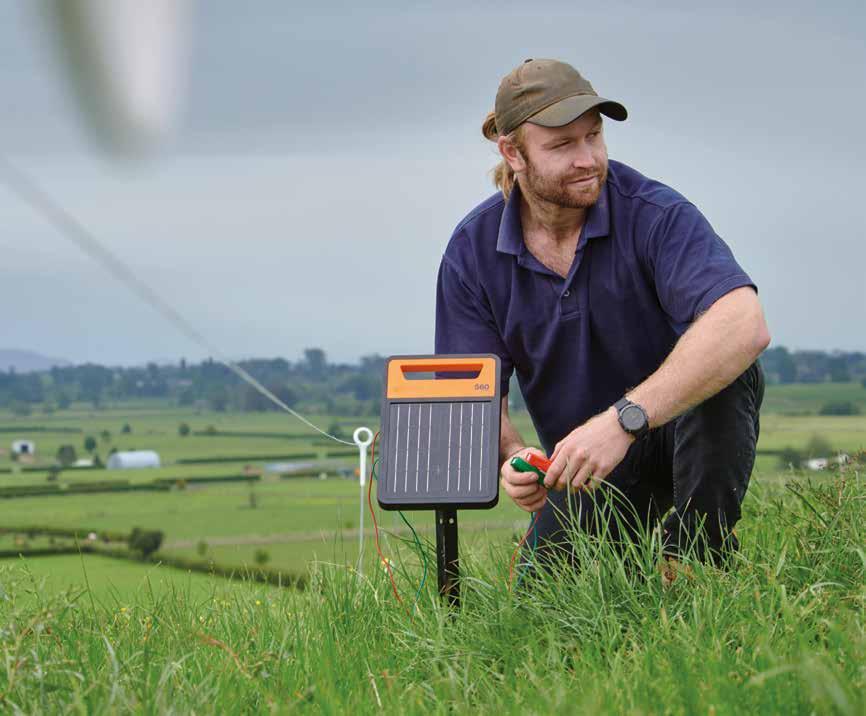
AgriBusiness May/June 2024 23 am.gallagher.com 0800 731 500 The power to graze anywhere. LITHIUM BATTERY NEW Faster charging, longer lasting. Intelligent, adaptive energy control. Reliable power, 24/7. Available instore and online now. Visit am.gallagher.com to learn more. LITHIUM SOLAR ENERGIZERS
Money in the bank – the value of consistency
THERE’S A REASON SOME LAMB PRODUCERS IN NEW ZEALAND EARNED $27.50 MORE PER HEAD THAN THEIR PEERS LAST SEASON, AND ARE LIKELY TO POCKET A SIMILAR PREMIUM FOR LAMBS SOLD IN 2023/24.
It’s perhaps best summed up by the man behind the accolades at one of Las Vegas’ most popular restaurants, Chef Brian Howard of Sparrow + Wolf.
“Lumina is unlike other lamb. It is tender, mild and rich. You can tell so much care and love has gone into the husbandry of the animal. When you say lamb, there’s no other option,” Howard says.
Headwaters sales manager Andrew Bendall says the secret to such market response lies in just one thing – consistency.
“That’s the Lumina by-word.
“From the uniquely bred genetics, to the management practices, to the high quality forage fed before processing, to the processing procedures themselves, and of course the end product, consistency prevails.”
A sharp increase in lamb numbers, from 50,000 in 2021 to 185,000 in the current supply season, is testament to both market demand for Lumina, and the scaleability of the Headwa-
ters model, Bendall says.
Every Lumina producer farming Headwaters animals is unique.
But the system as a whole is built to guarantee the size and specification of every single lamb cut bearing the Lumina brand.
“The rigorous standards that our farmers adhere to, and the meticulous processes undertaken in the raising, finishing and processing of Lumina lamb ensure the consistency.
“That’s why chefs around the world love it. They know what they are getting every time, making menu creation, portion sizing, preparation and cooking easier.”
They also know they’re getting something special in terms of key physical characteristics, he says.
The intramuscular fat target of all Lumina lambs, for example, is 3-4.5 per cent, levels never seen before in lamb.
“The combination of our lamb’s unique genetics, and finishing

on chicory and clover forages, is how we achieve the marbling of the intramuscular fat.”
Together these attributes make it perform differently when the time comes to cook it.
“Chefs have reported a lower fat melting point, which allows the flavours in the fat to meld with the meat.”
Lumina lamb also has significantly higher levels of Omega 3 and polyunsaturated fats than other lamb.
On the plate, it’s characterized
‘When you say lamb, there’s no other option�’

by milder taste, exceptional tenderness and lighter texture.
Headwaters plans to double the number of farms supplying Lumina lamb to satisfy growing demand for the unique food product from premium global restaurants.
But this is not about growth for growth’s sake, according to general manager Tim Saunders.
“It is about scaling with purpose, and contributing to a thriving sheep and beef sector in NZ, helping farmers grow businesses worth handing over to the next generation and ensuring sustainably produced, beautiful, melt-in-the-mouth NZ lamb stays on the menu globally.”
Headwaters New Zealand was founded in 2007 to produce the world’s best lamb through a fully integrated value chain from farmer to processor, sales, chef and diner.
As Omega Lamb, it won government backing through the Primary Growth Partnership (PGP) programme in 2015.
So far Alliance Group, Headwaters and the government have invested $25 million into the project.
For more detail contact Andrew Bendall, 027 299 5597 or andrew.bendall@headwaters.net. nz.
24 AgriBusiness May/June 2024 ANIMAL ADVISOR
Keep it coming! How early grass powers flock productivity
WORDS: Barenbrug
HERE’S A FAST (AND TIMELY) FACT - ABOUT 70 PER CENT OF LAMB FOETAL GROWTH OCCURS IN THE LAST THIRD OF EWE PREGNANCY, OR ROUGHLY THE FINAL 50 DAYS BEFORE LAMBING.
And that means your clients’ flocks need every nutrientdense mouthful of feed they can get during this time, because their energy requirements go through the roof.
Simultaneously, they’re so full of lamb(s) their rumens are increasingly compressed, which restricts their intake.
In other words, ewes simply cannot eat enough low metabolisable energy feed to meet the demands of late pregnancy, no matter how much is offered to them.
Not only that, they then have to become milking mega-stars as soon as lambs are born.
If they don’t lactate well straight away, because they haven’t been well fed, they can end up producing half as much milk as their flockmates who maintain
or gain weight in late pregnancy. Their lambs may only have 40 per cent of the energy reserves of lambs born to well-fed ewes; birth may be prolonged, mothering ability compromised, and lamb losses increased.
All of which helps explain why there is so much emphasis on making sure pasture quality and quantity are on-point in the weeks before and during lambing.
It’s also why we spent years perfecting a diploid perennial ryegrass that starts growing earlier than any other, and outyields everything else by 35 per cent in early spring.
With a heading date of -10 days, Tyson was developed to help fill the typical early spring feed pinch that occurs on most New Zealand red meat farms during
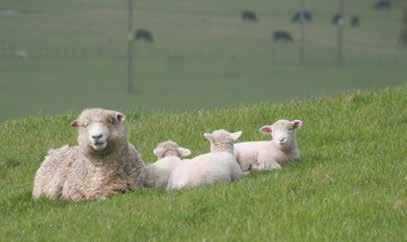
lambing and calving.
Despite all the productivity and genetic gains sheep farmers have made in their systems over recent years, this pinch remains a major choke point, directly influencing the number of lambs weaned, the weight of those lambs and ultimately farmgate returns.
In this regard your sheep farmers are just like your dairy farmers - lactational performance is a key driver of their productivity. Having more grass growing in early spring sets up a cascade of improved outcomes, because grass at this time of the season has the same nutritional value as legumes do later.
Ewes are better nourished, so they produce more milk.
More milk leads to higher lamb survival rates and faster growth during the time when lambs are most efficient at converting feed to liveweight gain, namely from birth to weaning. Remember, lambs grow faster on a diet of milk and pasture than at any other time of their lives.
Research shows lamb growth peaks somewhere between day 20 and day 40 of lactation, at an

average of 250-300 grams per head, per day.
Rapid early liveweight gain in turn mean your clients can draft more lambs straight off mum, often for early season premiums.
There’s no growth check to worry about, no drenching or dipping required, and they can free up feed for other animals.
As one Tyson farmer puts it:
“Having grass grow under the ewes’ feet is worth everything to us. If you get a pinch, it messes up the whole system. Mum doesn’t milk well, she wanders away from her lambs to look for feed, lambs don’t grow as well. It’s a critical time.”
Tyson has the genetic potential to significantly outgrow any other ryegrass in early spring. But just as high performance ewes need the right management to express their full genetic potential, Tyson needs the right management too.
Like any pasture, it must be set stocked at the recommended cover of 1500 kg DM/ha (or 4 cm) through lambing.
Otherwise it won’t have the leaves to capture enough sun-






AgriBusiness May/June 2024 25
ANIMAL ADVISOR
Tyson working its magic on the Central Plateau in September�
DON’T GET CAUGHT OUT Make sure you are up-to-date! Available Now ORDER yours today! • 140+ new listings • 160 deleted products • 100 existing labels updated (new weed, pest & disease claims) Plus the latest regulatory amendments SUBSCRIBE ONLINE www.novachem.co.nz The definitive guide to agrichemicals registered for use in New Zealand. ORDER NOW to receive your FREE pair of SureShield Coveralls* * Available to those who order directly from novachem.co.nz - while stocks last.
Photo Kathy Davis.
Be ARRMED this season…
Words: Zoetis
MANAGING PARASITES SUSTAINABLY AND WITH LESS RELIANCE ON DRENCHES IS BECOMING A COMMON TOPIC OF CONVERSATION.
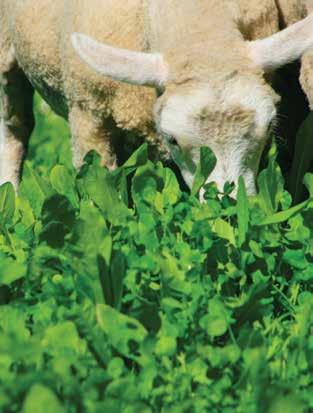
The short supply of novel actives coupled with increasing drench resistance has piqued the interest of people in the ag industry and they are actively looking for better and alternative solutions. And they are there!
Being ARRMED is a quick way of working through some parasite management options with clients to help them achieve their goals. So, what is ARRMED? It’s short for:
• Avoid
• Remove
• Refugia
• Monitor
• Effective Drench.
The key to parasite management is avoiding the larvae in the first place.
Providing plenty of good quality feed will prevent susceptible young animals from ingesting many of the larvae they would other-
light to grow to its genetic potential. The only thing your farmers might have to do differently with Tyson is keep an eye on its growth.
In a mild spring, once soil temperatures are 8oC and rising, it can get away on them, es-
wise have eaten.
Planting crops that parasite larvae don’t thrive in such as plantain, chicory, brassicas and lucerne (basically anything that is not brown top, ryegrass and clover), will help achieve AVOID. Next, REMOVE the larvae.
This means preparing pasture for susceptible stock classes by using older stock or different species of stock to clean up the larvae, or using pasture management - hay, silage, crop rotations - as a way of reducing larvae in these paddocks, so exposure to them is decreased.
Ensure REFUGIA is present.
These are the ‘good’ susceptible parasites that are allowed to breed in untreated stock.
It doesn’t matter if they are in younger or older animals, they just need to be allowed to pass their drench susceptible eggs out onto pasture where they will become part of the worm population that will then get ingested by drenched animals.
A refugia mob of ewes for instance, cannot be run on one part of the farm separate to where the drenched lambs are grazed.
They must cross over.
For the refugia mob to be effective, they need to be producing more eggs than they are removing through grazing - this is most likely to occur in stock that are in poor condition or that are younger e.g. 2-3 year old cows and 2-tooth ewes.
MONITORING is easy, relatively cheap and can save farmers time and money.
Surely that is reason alone to monitor?
Faecal egg counts (FECs) can be taken at the time of a normal drench interval to see if lambs, and even calves, actually need a drench.
Imagine the time saved if they don’t! FECs should never be looked at in isolationthe grazing history, drench interval and what the animals look like should still be considered in the drench decision.
The last tool is to use an EFFECTIVE DRENCH.
While combinations will usually always be more effective (more actives are more likely to be able to kill more worms), using an effective drench is more important than the number of actives in it.
How do you know if it’s effective? Do a drench check or better still, a faecal egg count reduction test. It doesn’t have to be with every drench available, just choose the drenches that the client wants to use.
The novel drenches such as Startect® and Zolvix® Plus have the least known resistance to them, followed by the triples, such as Troika® Mineralised Combination Drench for Sheep.
Pre-lamb treatment of ewes is the next seasonal task ahead of your farmers this season. While they have had a year to build ewe condition and prepare for lambing, inevitably, there will be ewes that will benefit from long acting treatment to optimise their performance.
For those animals, Zoetis has a range of mid-acting (Cydectin® Injection for Cattle and Sheep, and Eweguard®) and long-acting products (Cydectin® Long Acting Injection for Sheep) which can protect ewes from a larval challenge for up to 112 days.
Trials have shown that the production benefits of using Cydectin LA are the same as capsules1,2
The risk of using long acting drenches can be reduced by selectively treating ewes with the right product and using the parasite management tools.
There is plenty more detail to get into about parasite management, but starting with these basics makes for good conversation and is not too difficult to remember.
Being ARRMED is the way of the future!
For more information on parasite management go to www.changeitup.nz or speak with your local Zoetis area manager.
1CM Miller, S Ganesh, CB Garland & DM Leathwick. Production benefits from preand post-lambing anthelmintic treatment of ewes on commercial farms in the southern North Island of New Zealand. NZVJ, 2015.
2C Bingham, A Hodge and B Mariadass. Comparison of two long acting pre-lambing anthelmintic treatments on the productivity of ewes in low body condition. New Zealand Veterinary Journal, 2017.
pecially if they’ve set stocked it at the rate they would normally use for normal, slower growing pastures.
This is a good ‘problem’ to have!
And it can be easily managed by adjusting the stocking rate to match the amount of
feed being grown.
That way farmers will maintain pasture quality, and keep their ewes and lambs thriving.
For more detail, contact your local Barenbrug area manager.
26 AgriBusiness May/June 2024
ANIMAL ADVISOR
Crops like Choice chicory will help lambs avoid parasite larvae in the first place�
Agricom.
Photo:

C-Dax leader passes the baton
Fifteen years ago, Shearer had finalised the sale of K āpiti Fine Foods to Fonterra and was planning to head back to Auckland but was approached about heading up the Palmerston North-based company.
“At that point I hadn’t even heard of C-Dax, but my interest was piqued and after looking at the business I could see the potential for New Zealand farmers,” he says.
Mike Whitty, C-Dax chairman, says during his time at C-Dax, Shearer delivered for farmers through the offering of modern equipment technology and solutions of choice to assist and guide every day on-farm management decisions.
“His contribution to the business and to the broader industry has been significant.”
In 2009 Shearer saw off a serious play from an overseas com-
petitor and launched C-Dax’s value brand In-Ex.
He was also behind the reinvigoration of the award-winning Pasture Meter and its future successor.
“With the potential requirement for a new direction and a reinvigorated strategy, my wife Viv and I see this as a natural time to change our direction too,” says Shearer.
“On behalf of the C-Dax board, Agnition and the Ravensdown executive, I’d like to thank Greig and Viv for their contribution to the business and to the agricultural engine room of New Zealand,” Whitty says.
“We wish them all the very best for the future.”
Shearer finishes with C-Dax at the end of this month.
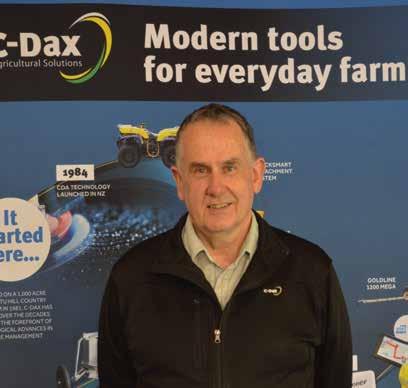
28 AgriBusiness May/June 2024
AGRIBUSINESS
AFTER A DECADE AND A HALF CONTRIBUTION TO C-DAX AND THE WIDER AGRICULTURAL SECTOR, GREIG SHEARER IS RETIRING FROM HIS POSITION AS C-DAX MANAGING DIRECTOR.
Empower yourself with the essentials of good governance Join our next Company Directors’ Course cohort and secure your place on the course trusted by more than 7,500 NZ directors. New Zealand’s home for leaders in governance. To book, contact us on 0800 846 369 or governancedevelopment@iod.org.nz, or visit iod.org.nz/governance-courses
Right: Greig Shearer
ANZCO Foods CE finds real value in Company Directors’ Course
ANZCO FOODS GROUP CHIEF EXECUTIVE PETER CONLEY HAS MANY YEARS OF GOVERNANCE EXPERIENCE AND IS A MEMBER OF BOARDS AROUND THE GLOBE, BUT HE STILL FOUND VALUE IN UNDERTAKING THE INSTITUTE OF DIRECTOR’S COMPANY DIRECTORS’ COURSE (CDC).
“I found it beneficial; it built on my governance knowledge,” says Peter, who participated in the CDC in Queenstown in 2023.
“ANZCO has very good independent professional directors, so I have been fortunate to have had fantastic mentors and that is ongoing.
“But I hadn’t had any formal development or training around the boardroom, so I wanted to be able to put some independent structure around that too. [I wanted] to see what I did know and did not know and where there might be gaps.”
Conley has more than 30 years’ experience in the red meat sector, including managing ANZCO’s operations in North America for five years.
He became CEO of ANZCO Harvest in 2013 and Group CEO in 2017.
He is on the board of three ANZCO joint ventures, Taranaki Bio-Extracts, SBT Marketing and the New Zealand Lamb Company, and businesses ANZCO works with in China, Japan, the UK, Australia, Germany and Belgium.
At the time he took the CDC course, he had also just been appointed as a director of Beef + Lamb NZ and the NZ Meat Board.
“I had always been involved with privatelyheld commercial entities and that was my first exposure to a levy board or a not-forprofit,” he says.
“So, I wanted to get a broader perspective on governance, governance challenges and how other businesses work. That was another key motivation for doing the course.”
The five-and-a-half-day CDC is the benchmark for directors and senior leaders reporting to boards with a focus on improving decision-making ability in the boardroom.
It explores the director’s roles and responsibilities and includes daily board simulation exercises, bringing case studies to life to highlight the unpredictable nature of business and the human nature of directorships.
Attendees report benefits beyond governance skill building, particularly the development of strong governance networks, personal growth and confidence in their directorships.
Conley says he found the diversity of those participating, from across a wide variety
of business and governance roles, a valuable part of the programme.
“Just to sit with people that were on the course and understand their governance issues. For instance, the challenges that not-for-profits face. I had probably taken some of that stuff for granted and it is very different to running a commercial entity.”
Topics covered on the course include best practice corporate governance, strategy in the boardroom, finance and the board’s role, directors and the law, board dynamics and culture, and risk governance.
The programme is a simulated board exercise. Participants work with four to five other board members addressing a scenario such as company solvency. Then, in the afternoons, each group tests their assumptions and decisions with the full group and compares them to genuine NZ case studies.
reaffirming key competencies, asking the right questions balanced by the right level of business acumen and board skills matrix work. That was very useful for me and something I have used for boards I am involved in as we look at what we might need in the future.”
Good governance is critical to holding organisations to account, he believes.
“It ensures more diversity around the skills that the board can bring to the wider business. It supports the organisation’s values and culture and helps set the strategy for the organisation.
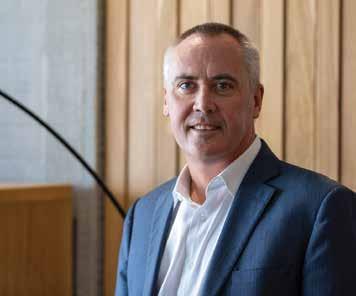
“A board needs a really good understanding of the business and its risks, and to have oversight of that and ensure it is appropriately controlled within the business.”
He also sees continued professional development as important for directors.
“In terms of learning, for me it was more around enforcement of the importance of good governance,” says Conley. “The course has definitely made me stop and think about what that looks like a lot more.
“The role of the director in leading the business was also an important takeaway and the split around governance and management and making sure that the directors and CEO in the business act as one.
“Also, the importance of the strength of good communication, at board level and between the board and the organisation.”
The course increased Conley’s understanding of how building an effective board is so important.
“I have been lucky to have very good mentors and to have joined very good boards –the structure of ANZCO allows that.
“But it made me understand the challenges other businesses can have around that and I saw there were important learnings for people on the course around building and delivering effective boards.
“Other takeaways were the importance of
“I try to do some activities around professional development every year. I’d had the IoD course on my radar for the past four years but, with the pandemic and other things, had ended up deferring.
“If you are in important roles and aspire to do things, then you need to be appropriately resourced and professional development helps you to do that.
“That saying ‘you don’t know what you don’t know’ is very true. Professional development opens you to a world of wider experiences and perspectives and also helps with self-development and awareness.
“When you have people coming on a governance journey, not all will have had experience of being associated with boards for long periods of time.
“Courses like this are very important to anyone involved in governance or with a governance role or working closely with a board. I enjoyed it, it was a very good balance.”
To find out more about the Institute of Directors’ Company Directors’ Course, visit www. iod.org.nz or call 0800 846 369.
AgriBusiness May/June 2024 29
AGRIBUSINESS
Peter Conley�
Novel packaging plants a flag for sustainability
A NEW COMPANY HAS BEEN ESTABLISHED TO MARKET A SUSTAINABLE PLANT-BASED ALTERNATIVE TO POLYSTYRENE, DEVELOPED THROUGH A GOVERNMENTFUNDED CROWN RESEARCH INSTITUTE COLLABORATION.
The new company, ZealaFoam Holdings, will focus on commercial opportunities for the plastic replacement known as ZealaFoam.
The Biopolymer Network (BPN) – a joint venture between AgResearch, Plant & Food Research and Scion – will retain a shareholding in ZealaFoam Holdings.
Other shareholders include New Zealand deep tech incubator Bridgewest Ventures; Bay of Plenty-based plastic foam product manufacturer OC1; Chris and Karen Lysaght, Auckland; BPN CEO Sarah Heine; and eFoam, which describes itself as the UK’s largest online foam supplier.
Their investment will allow the
company to take the technology into commercial production worldwide.
Established in 2005, BPN was created to develop new biobased materials, using scientific expertise and capability from the three CRI partners.
A number of bio-polymer products were developed and tested, the most commercially-promising being ZealaFoam, a 100 per cent plant-based foam with the same functional attributes as polystyrene.
The first commercial product, EcoBeans bean bag fill, was launched in 2022 and is now sold in New Zealand and Australia.
“ZealaFoam is a really exciting product with the potential to address some big challenges for
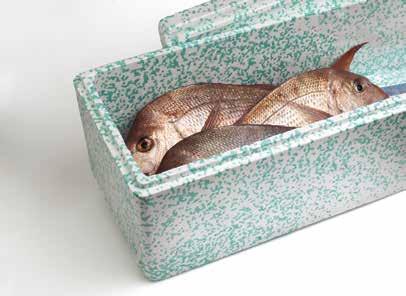
Potential applications included moulded products, like chilled produce and fish boxes�
the packaging industry globally, particularly around its use of fossil fuels and issues with waste disposal,” says BPN CEO Sarah Heine.
“The investment in the new company will see the technology move into a new phase of commercialisation. It’s really rewarding to see technology developed from NZ research attracting international attention and offering a unique sustainable alternative to a widely used product.”
ZealaFoam is made from Polylactic Acid (PLA) sourced from
Familiar face takes the reins at meat co-op
ALLIANCE GROUP HAS APPOINTED CURRENT DIRECTOR MARK WYNNE TO BE THE CO-OPERATIVE’S NEW CHAIR, REPLACING MURRAY TAGGART.
“Like all meat exporters, Alliance continues to face significant volatility as a result of geo-political tensions, inflationary pressures, high levels of inventory across all proteins in various markets, particularly lowercost Australian sheep meat, and weakening global markets,” Wynne says.
“The Board remains committed to the co-operative’s long-term strategy, and in particular, the changes made across the business in response to the tough trading environment. These changes have highlighted significant opportunities for improvement.
“The global markets continue to be challenging, however, the new season has started on a much more positive note. But there is more work to do.”
Wynne took over the new role last month, after Murray Taggart’s 10-year stint in the chair.
“It’s been a privilege to lead New Zealand’s only 100 per cent farmer-owned red meat cooperative. There is a great team at Alliance, and despite the current challenges, the cooperative has a strong future.
“The past year has been tough for farmers and the co-operative on the back of significant weakening of prices in our global markets and high costs behind the farm-gate.
“I am confident the co-operative’s resilience and its ability to adapt in the face of adversity will ensure it will thrive for another 75 years.”
Wynne has extensive experience in agribusiness, including 20 years in the dairy in-
starch derived from a variety of plants such as maize, cassava and sugar cane.
ZealaFoam EcoBeans can be used for bean bag fill or loose fill packaging, with the same performance as polystyrene beads. As they are made from plants, EcoBeans are industrially compostable.
ZealaFoam is also close to commercialisation as an alternative for moulded polystyrene products, such as chilled produce and fish boxes, helmets, bee boxes and printable film.
 Mark Wynne�
Mark Wynne�
dustry. He stepped down as chief executive of Ballance Agri-Nutrients co-operative in September 2023.
Wynne was previously president South Asia for Kimberly-Clark, growing the United States multinational’s market share with brands like Kleenex and Huggies.
He is an experienced governor and has served on various boards during his management career and in recent years as a director.
30 AgriBusiness May/June 2024
AGRIBUSINESS
Photo: Plant & Food Research.
Protecting your people so they can go home to theirs
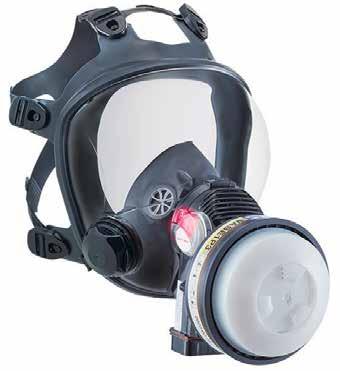
STS SYNC09 BREATH RESPONSIVE PAPR
• Voice amplifier and speech diaphragm allows clear and safe communication
• Compact and lightweight (745g)
• Long operating times - up to 11.5 hours
• LED filter change indicator
• Visor is anti-scratch coated (outside) and anti-fog coated (inside)
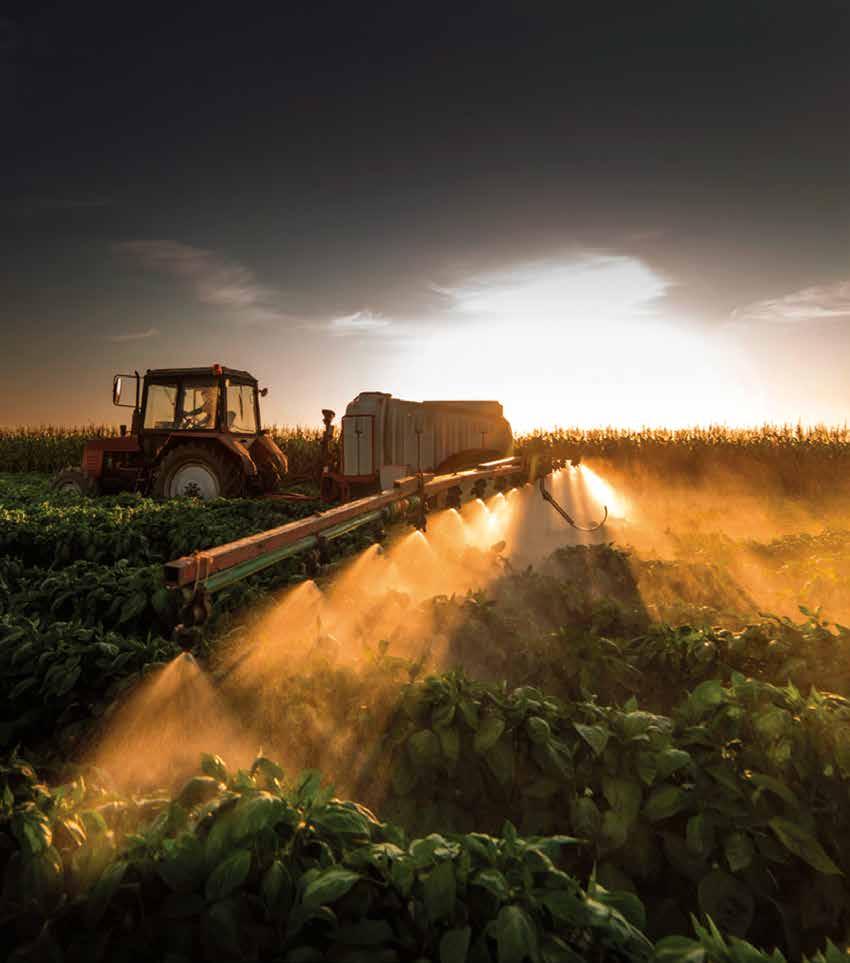
HAZCHEM STORAGE
OUTDOOR CHEMICAL STORAGE

HAZCHEM PPE
CLEANAIR CHEMICAL 2F PAPR PLUS HEADTOP


HAZCHEM RESPONSE
CHEMICAL SPILL RESPONSE KITS

Offering a comprehensive selection of HAZCHEM safety solutions to meet all your farming requirements. Whether you need secondary containment solutions, personal protective equipment (PPE), signage or emergency response kits, we’ve got you covered. Products are available through leading rural supplies retailers
HAZCHEM SIGNAGE SITE WARNING INFORMATION



HAZCHEM SAFETY SOLUTIONS
NEW ZEALAND’S LEADER IN HAZCHEM SAFETY SOLUTIONS
Well-being comes first in Northland
WHAT HAPPENS WHEN A LINESMAN AND A NURSE CHANGE PROFESSIONS AND BECOME RURAL SPRAY CONTRACTORS?
In this case, you end up with a culture of safety and health that more than holds its own against a wide range of other businesses.
And that includes companies focussed on children, beauty, retail, fitness, hospitality, accommodation, forestry and manufacturing.
Chance and Rochelle Campbell from Northland Vegetation Control didn’t set out to win the workplace safety category of the 2023 Northland Business Excellence Awards.
But they’re very proud to have done so, and to have had the chance to showcase their industry in such a positive way.
“Everyone who enters the awards has to fill out a safety and health section as part the application process,” Rochelle Campbell says.
“But we weren’t specifically targeting that – we entered because we thought it would be good for us to look at all aspects of the business from the outside in, and see where we could improve.
“Actually winning the award on the night was a big surprise!”
The pair, who have three young children, bought NVC in 2018 and joined Nufarm Accredited Contractors last year.
Having diversified to include a wide range of tree planting and maintenance contracts as well as weed control, they now field a full time team of 10, including themselves, with up to eight further casual staff in the winter months when planting trees.
Spraying is largely Northland-based, from the Brynderwyn Hills to Cape Reinga. The
tree work, managed by Chance Campbell’s brother Trale, stretches as far afield as Levin, Gisborne and Hawke’s Bay.
Nufarm is an integral part of the business, both in terms of product and support.
“It’s been really good forming a relationship with one supplier; it’s made everything flow better in our yard. They back their products 100 per cent and we’re really impressed with the support and guidance we get from Joe Heng. He’s a mine of knowledge.”
The Rural Contractors NZ network, which Nufarm supports, has also benefitted them personally and professionally.
“We didn’t get to the conferences for a start, because of COVID-19. But when we did, it was really cool to meet and chat with other contractors from around the country, and learn from them.
“It’s great to see the effort Nufarm puts into supporting rural contractors in NZ. Sometimes as spray contractors, you’re not really seen as a ‘professional’, you’re just someone who sprays weeds. When you see Nufarm putting resources into the industry, it makes you feel more valued.”
Health and safety has been a priority for the Campbells from the get-go, not just because of their own experience of it in their previous careers, but for the good of their team, and the business as a whole.
Award judges described their processes and procedures as ‘exemplary’, and noted their one-on-one training to upskill workers on risks around chemicals, transport, planting equipment, machinery and working in remote environments.
Rochelle Campbell says it’s a collaborative effort that tries to address all areas of team well-being, including social and family considerations.
“When they come into the industry, our people know they’re going to be dealing with chemicals, they know they’re going to be driving on rough terrain – we talk about those risks when we interview them, and make sure they have the training they need to work safely.”
Physical well-being is monitored through regular blood testing, testing for chemical exposure.
“But we’re also aware that when they go away on spraying or planting jobs, for instance, they might be without internet for up to a week at a time, so we have a portable Starlink to help them stay connected to family and friends.”
Likewise a pool table and darts board are part of the fit out at head office, and there’s almost always a Friday night social catch-up for everyone involved.
She says entering the Northland Business Awards was an opportunity well worth seizing.
“As a contractor, you’re so busy, you never have time to work on the business, as opposed to working in it. Going through the application process has been great for us. We’ve started working with a business advisor, and we’ve learned so much.”
Would she encourage other contractors to enter similar events?
“Yes, 100 per cent!”

PEOPLE
Chance and Rochelle Campbell, with their children�
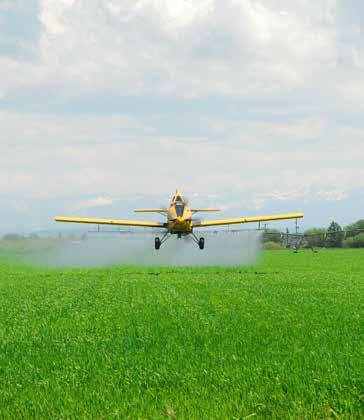
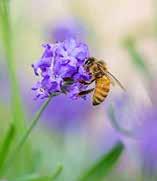

BEE RESPONSIBLE
Aerial and ground spray applicators can help protect bees:
Avoid spraying in windy conditions to prevent drift. Take into account wind direction and atmospheric stability.
1 2 3 4 5 6 7 8
Implement an integrated pest management plan to apply pesticides only when necessary.
Coordinate with local beekeepers before spraying so nearby hives can be moved or otherwise protected.
Follow the instructions on the label to ensure you use only the recommended dose.
Use drift-reduction application equipment that is well maintained and calibrated.
Avoid spraying pesticides when bees are foraging.
Avoid contamination from spray liquids when mixing and properly dispose of waste and other used materials.
Use genuine products and alert authorities of counterfeit or illegal pesticides as they have unknown impacts on wildlife.
www.aphanz.co.nz
Keeping farms, feed, equipment, and livestock safe requires a community

Join your neighbours in taking care of your local landscape through predator control. Our toolbox will guide you through the secrets to being successful and keeping costs down.
Download your Guide to Predator Control on Farms from: predatorfreenz.org/farms Be a good neighbour — keep your farm predator free

New face joins ADAMA NZ
ALAN STEEL HAS BEEN APPOINTED CANTERBURY COMMERCIAL MANAGER FOR ADAMA, TAKING OVER FROM DAREN MABEY WHO RETIRED LAST MONTH.
He’ll cover the same area, from the Waitaki River north, with the addition of North Canterbury.
Steel joins ADAMA with 10 years’ experience as a technical field representative with PGG Wrightson, first on the West Coast, then in Rangiora.
He brings with him plenty of experience in both pastoral and cereal agronomy, and says after a decade in retail he’s excited about the opportunity to become more closely involved in both pending product development and technical support for ADAMA’s existing portfolio.
Raised on a red meat farm at Waikaka, near Gore, Steel holds a B.Ag.Com. from Lincoln University with a double major in farm management and marketing.
ADAMA appealed for several reasons, he says, not least being a good team culture and a chance to apply his solutions-driven approach in a new context, helping customers in a role he knows well to in turn help their
farmers get the best from the company’s products and industry knowledge.
“I was looking for a new challenge in the industry, with a bit more technical involvement, and I also wanted to get closer to the process of bringing new solutions to the market for farmes and growers.
“Being able to see some of what was coming a bit earlier in the process was a real attraction. With the potential regulatory pressure and changes coming onto old chemistry, crop protection is evolving in New Zealand.
“As well as biologicals and their different ranges of efficacy, for example, there’s the question of how we manage weeds and pests with increasing levels of resistance.”
Outside of work, Steel and his wife are busy parents to their 18-month-old son, and he is a keen adventure racer and multi-sport athlete, completing his first two-day Coast to Coast this past autumn.
To contact Alan Steel or the ADAMA team, visit ADAMA.com or phone 03 543 8275.

On-farm where it’s at for new consultant
THE OPPORTUNITY TO SPEND MORE TIME ON-FARM WHILE PROVIDING A DEDICATED SERVICE FOR SHAREHOLDERS ATTRACTED NEW ENVIRONMENTAL MANAGER BEN HOWDEN TO WORK FOR WAIMAKARIRI IRRIGATION (WIL) IN CANTERBURY.
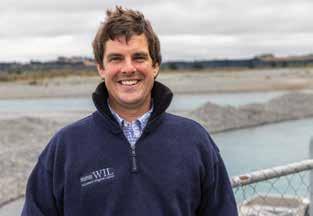
“Spending more time out on farm with shareholders while also considering what the future holds really appeals to me. I am keen to get to know our shareholders and find out how I can help them to achieve their environmental goals.”
Growing up on his family’s farm near Ashburton, Howden under-
stands what it takes to operate a successful farm.
He holds a master’s degree in environmental science and started his career as an environmental analyst with Rangitata Dairies in South Canterbury.
In that role, he focused on providing on-farm and consent support for the company’s farming operations.
Howden then moved to Irricon where he spent five years working as an environmental consultant focussing on consents and auditing during the time when Farm Environment Plans (FEPs)
became a requirement for farmers.
“There was a lot to learn during this period for both consultants and farmers.”
In 2021, he joined Ravensdown as a principal consultant, leading a team of consultants based in mid-Canterbury to support farmers in meeting regulatory requirements and environmental goals.
“I enjoyed leading a team and had the opportunity to work in a large organisation where I could gain a lot of experience and learn new skills.
“After a few years I wanted to spend more time out on-farm again and being able to work closely with farmers is what attracted me to the role with WIL.”
Howden’s looking forward to helping WIL shareholders navigate options for a sustainable farming future.
“Obviously we have challenges in terms of regulation and climate change, but we also have plenty of opportunities including technology and efficiency gains.
“The irrigation scheme also has an opportunity as a co-operative to secure a more sustainable and reliable water supply.”
Along with building strong relationships with WIL’s shareholders and familiarising himself with the scheme, Howden is supporting preparation of WIL’s discharge consent renewal during the first few months of his new role.
In his free time, Ben enjoys sport and the outdoors and shares his love of nature with his young family. They live in Darfield.
“I love diving, fishing, hunting and cricket. Going away camping is another activity we enjoy doing as a family. We like to be outside doing stuff whenever possible.”
AgriBusiness May/June 2024 35
PEOPLE
Ben Howden�
Alan Steel�
Two winners crowned at 10-year milestone
TWO ‘EXCEPTIONAL’ YOUNG WOMEN HAVE BEEN CROWNED AS THE 2024 WINNERS OF THE COVETED TRANS-TASMAN AGRICULTURAL AWARD, THE ZANDA MCDONALD AWARD, AT A SPECIAL 10-YEAR CELEBRATION.
New Zealander Nancy Crawshaw and Australian Tessa Chartres have taken out the top honours with the award that recognises and supports future leaders in the primary sector.
Crawshaw, 27, is an extension officer for Angus Australia based in New Zealand.
She utilises knowledge of the beef supply chain to facilitate engaging field days, youth programs and workshops for primary producers which adds value to their businesses.
Chartres, 32, based in New South Wales, is general manager of business development at Murray Irrigation where she is responsible for the delivery of Commonwealth funded projects, water policy, ICT transformation and commercial busi-
ness contracts.
The Zanda McDonald Award provides an unmatched opportunity to accelerate the careers of young people in ag, and in turn, help to shape a better future for the trans-Tasman agricultural industry. This is achieved by providing unparalleled opportunities for growth, mentorship, and education.
Award chairman Shane McManaway says judges were extremely impressed with both Crawshaw and Chartres’ achievements to date, and the remarkable contributions they’re already making to agriculture.
“They both embrace the values that hold true to the award, and are extremely worthy recipients.
“Nancy is thoughtful and sin-
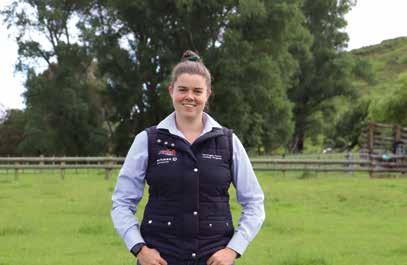
cere, and has an in-depth knowledge of the industry from pasture to production.
“She has a wide network across the trans-Tasman, and is passionate about the industry. Her strong interest in the Angus breed is evident through her actions, and she has a clear pathway on how she plans to deliver impact to the industry.”
Reflecting on the award having reached its 10th year, McManaway pays tribute to the supporters who have contributed to its enduring success.
“We are fortunate to have an amazing network of 15 partners and over 250 mentors who are the lifeblood of this award, providing their time, knowledge and financial support.
“It is this combined support that underpins our unmatched mentoring programme and enables us to help propel the next generation in agriculture to new
Community passion drives personal involvement
NEW EXECUTIVE DIRECTOR TYLER LANGFORD WILL BE A STRONG ADVOCATE FOR FARMERS, SAYS THE FERTILISER QUALITY COUNCIL.
“FQC is in good hands with Tyler’s experience in making legislation workable for farmers,” council chair Anders Crofoot says.
“She has a strong background in farming and refining legislation, and has hit the ground running.”
Farmers are front of mind for the FQC as the key stakeholder to their programmes.
Having spent the past five years honing her skills on the Federated Farmers Dairy Council, “Tyler is able to negotiate the finer detail of legislation up the pipeline, which is just the strength FQC needs,” Crofoot says.
And she’s relishing the new role.
“For every piece of compliance farmers are made to fill out, that is another committee meeting or school event they can’t support.
“I am really looking forward to maximising the opportunities within FQC’s Fertmark and Spreadmark quality assurance programmes.”
Advocating for farmers to ensure that rural communities not only survive but thrive is very personal to Langford.
“I have the blessing of dairy farming in the Golden Bay community with my husband Wayne and three teenage boys.
“I am hugely passionate about the strength and resilience of our rural community. I actively spend time in conservation groups, catchment groups, rugby clubs and serving as the chair of our local recreation park board.”
All of this has led her to the role as the FQC
heights.”
As part of the prize package, Crawshaw and Chartres each receive an impressive personal development package, including a fully personalised mentoring trip in both countries, $10,000 worth of tailored education or further training, media coaching and ongoing networking opportunities.
Finalists also get rewarded, becoming part of the award alumni, and receiving ongoing access to mentoring, networking opportunities and support.
Among the NZ finalists in this year’s award were Whakatane agricultural economist Carla Muller, 31, principal consultant for Perrin Ag and former president of NZ Institute of Primary Industry Management; and Muriwai beef farmer Tim Dangen, 31, 2022 recipient of the FMG Young Farmer of the Year Award.
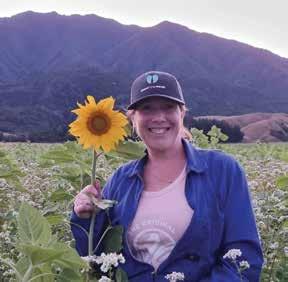
executive director.
A massive piece of work is the Spreadmark Code update, she says.
“I am really excited by what the team has created in the revision of the Spreadmark Code and can’t wait to share it with the rural community soon.”
36 AgriBusiness May/June 2024 PEOPLE
Nancy Crawshaw�
Tyler Langford
Supercharge pasture for spring
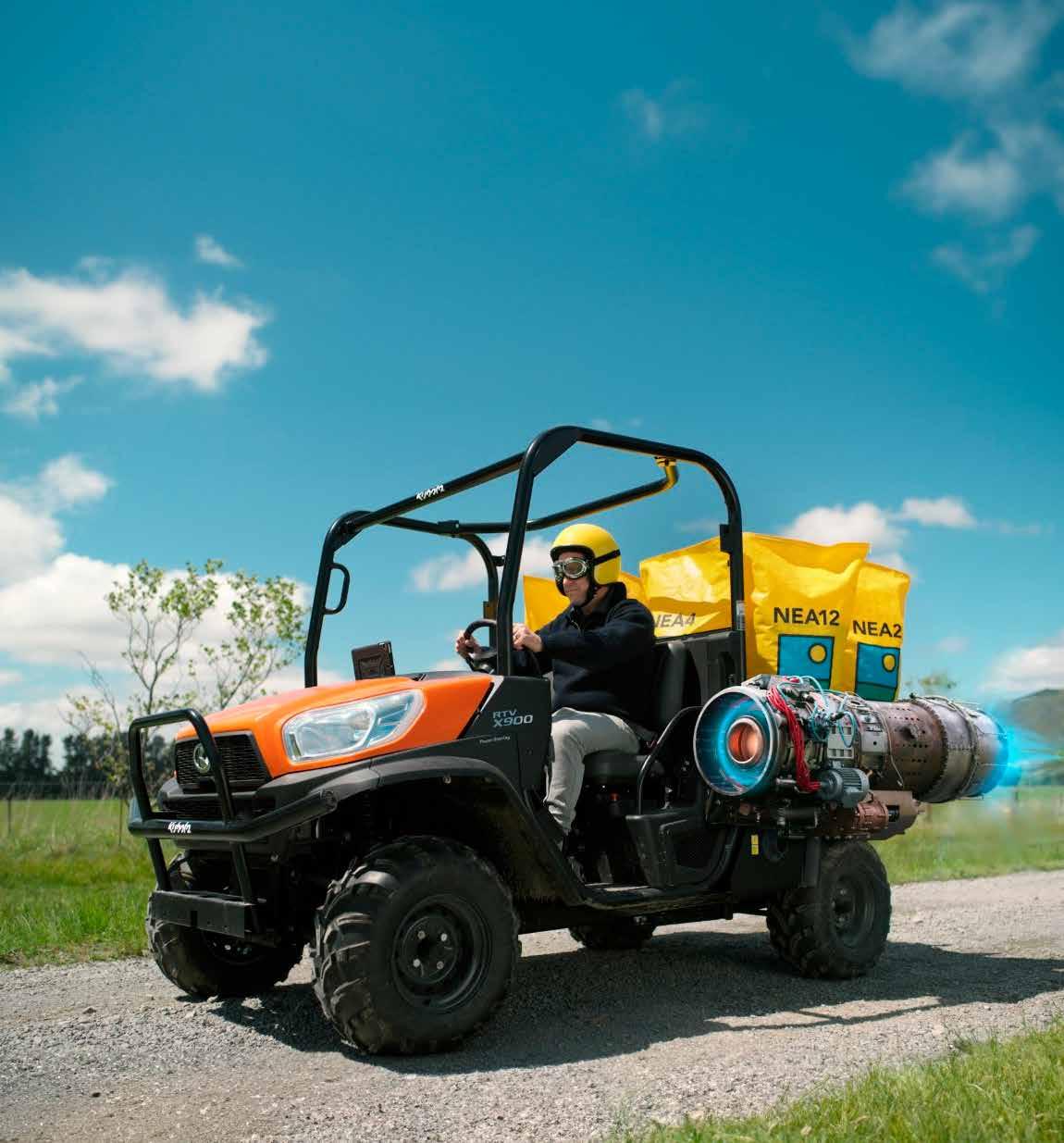
Experience superior persistence and improved growth with Maxsyn NEA4, set the standard with the renowned Shogun NEA12 and achieve envy-worthy performance and environmental benefits with Forge NEA and Array NEA2.
Better pasture together TM

Helping farmers do the biggest job on earth
All over the country more and more growers and agronomists are turning to the trusted performers and the ever-growing range of crop protection and production solutions from BASF


ALWAYS READ AND FOLLOW LABEL DIRECTIONS. © Copyright BASF 2023 ® Registered trademark of BASF. ACVM registration numbers -Systiva: P008183, Kinto Duo: P008307, Poncho: P005967, Sharpen: P008391, Arietta: P008825, Revylution: P009923, Revystar: P009654. 213887 0523
Scan here to find out more about BASF crop solutions Revystar Fungicide ®

















































































































 Mark Wynne�
Mark Wynne�





















